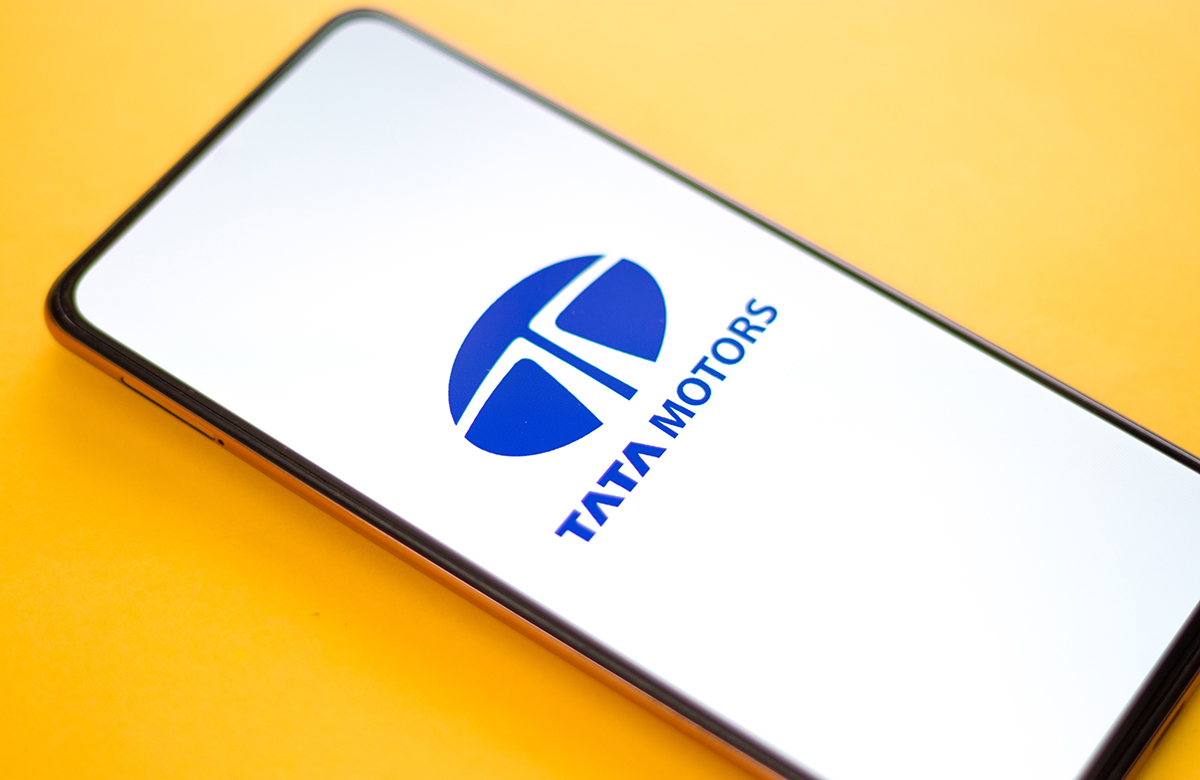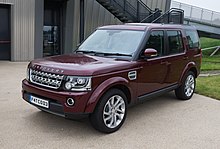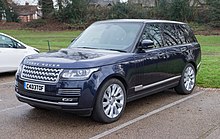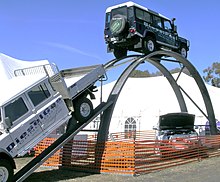Новости·
09 ноя 2022, 15:49
0
0
Индийская Tata Motors проведет делистинг американских депозитарных акций в январе 2023 года. Автомобильный концерн покинет Нью-Йоркскую фондовую биржу почти через 18 лет после получения листинга
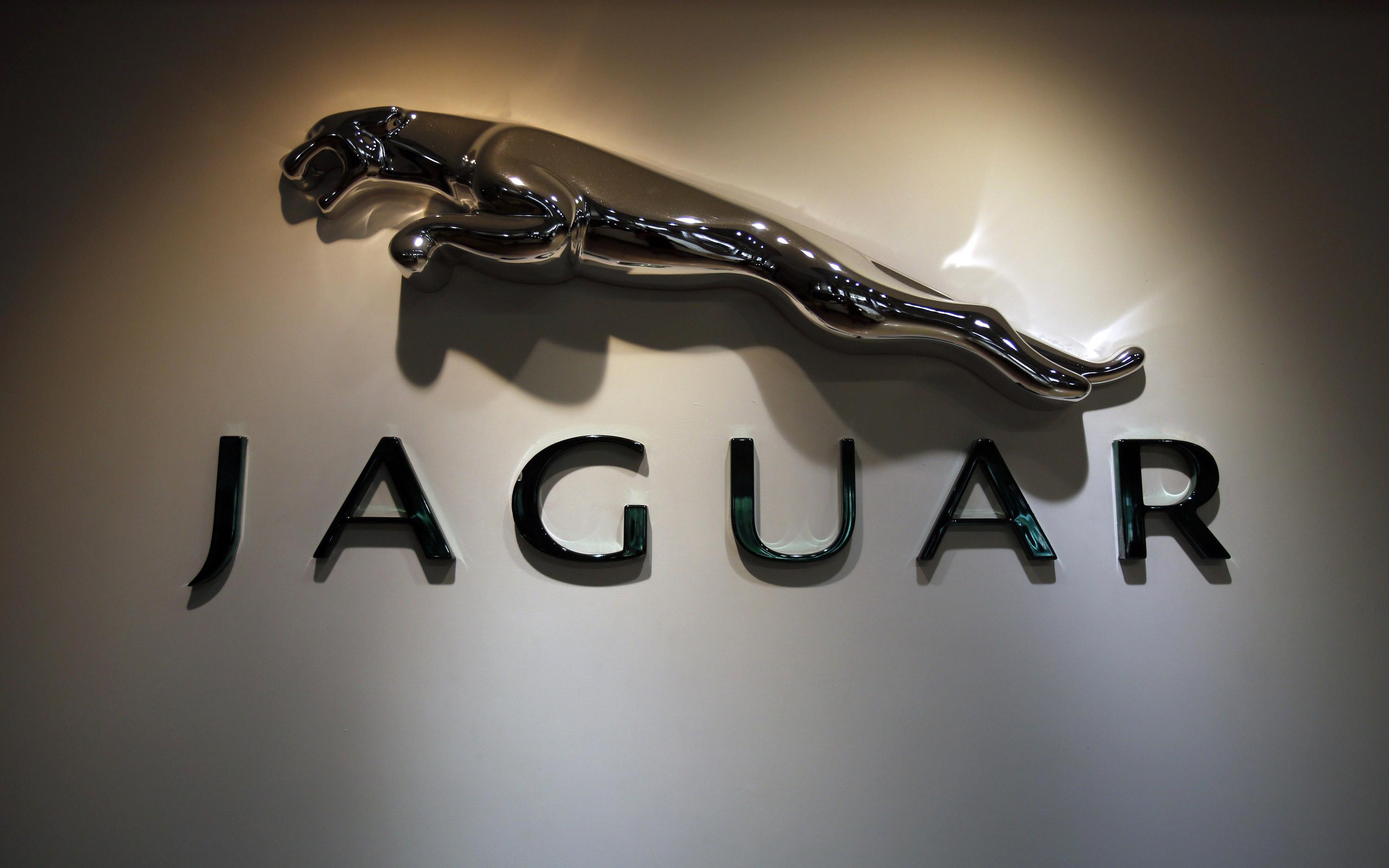
Логотип Jaguar компании Jaguar Land Rover. С 2008 года бренд принадлежит индийской Tata Motors
Автомобильный концерн Tata Motors, которому принадлежат бренды Jaguar и Land Rover, заявил, что планирует провести
делистинг
своих американских депозитарных акций (ADS) с января 2023 года, сообщил Reuters. Компания покинет Нью-Йоркскую фондовую биржу примерно через 18 лет после получения листинга на торговой площадке.
Крупнейший индийский производитель автомобилей Tata Motors заявил, что из-за значительного увеличения
ликвидности
и участия иностранных акционеров на фондовых рынках Индии, а также постоянного снижения доли ADS в общем объеме находящихся в обращении обыкновенных акций необходимость листинга на биржах в США для компании значительно снизилась.
Уход с американских биржевых площадок поможет упростить требования к финансовой отчетности и сократить административные расходы Tata Motors, сообщили в компании. Акции Tata Motors по-прежнему будут торговаться на Бомбейской фондовой бирже (BSE) и Национальной фондовой бирже Индии (NSE).
Американские депозитарные акции (ADS) — акции неамериканской компании, номинированные в долларах США и торгующиеся на фондовых биржах этой страны. ADS компании Tata Motors были выпущены в 2004 году. Компания разместила свои бумаги на Нью-Йоркской фондовой бирже (NYSE). В 2008 году Tata Motors купила у Ford Motor британские бренды Jaguar и Land Rover за $2,3 млрд.
Термин, обозначающий вероятность быстрой продажи активов по рыночной или близкой к рыночной цене.
Подробнее
Исключение ценных бумаг из списка ценных бумаг, допущенных к торгам (котировального списка биржи) по инициативе компании-эмитента или в связи с дефолтом эмитента. После делистинга ценные бумаги этого эмитента могут торговаться только на внебиржевом рынке, а капитализация компании не может быть рассчитана.
Истинная картинка мировой автомобильной промышленности.
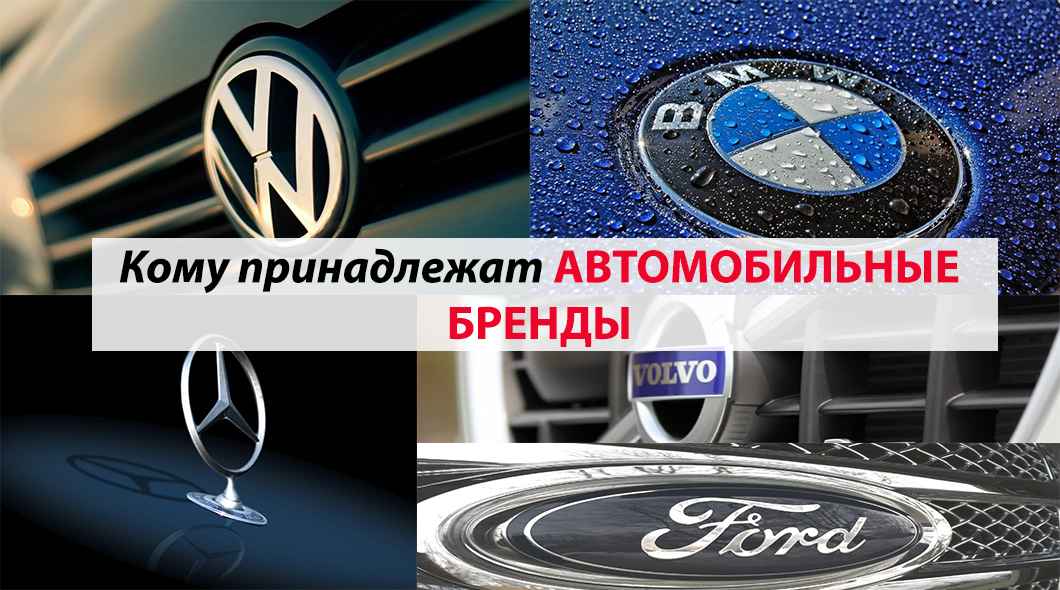
В самые первые дни автомобильной промышленности все автопроизводители были независимы друг от друга ни в какой степени. Но рынок есть рынок, всегда кто-то из них становится успешней своего конкурента. В итоге получается, более успешные автомобильные компании становятся покупателями конкурирующих с ними автобрендов. Таким образом в автопромышленности начали создаваться крупнейшие в мире конгломераты, которые и по сей день являются смыми крупными автокомпаниями в мире по количеству производимой ими продукции и естественно по самим продажам. Уважаемые читатели, давайте вместе посмотрим на текущее состояние всего Мирового автобизнеса. Предлагаем вам познакомиться с известными и очень популярными автомобильными брендами, которые в настоящий момент находятся под контролем крупных корпораций и автоальянсов.
«Abarth» — Принадлежит компании «Fiat / Chrysler»

Компания «Abarth» была основана в 1949 году. Первоначально этот авто-бренд занимался производством гоночных автомобилей и заодно производством автокомпонентов для мощных транспортных средств. В 1971 году основатель компании Карло Абат продал свой бренд компании «Fiat». В данный момент компания «Abarth» производит очень мощные версии машин на базе автомобилей Fiat.
«Alfa Romeo» — Принадлежит компании «Fiat / Chrysler»
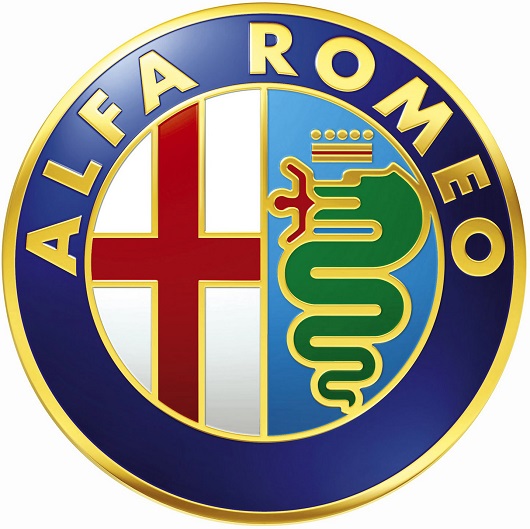
История автофирмы «Alfa Romeo» берет свое начало в первые годы 20-го века. В истории компании были и взлеты и падения, которые в целом повлияли на всю мировую автопромышленность. Но несмотря даже на то, что компания «Alfa Romeo» становилась в 1950 и 1951 годах победителем гонок Формула-1, все-же к середине 1980-х годов этот автомобильный бренд оказался в очень тяжелом финансовом положении. Именно в этот момент фирма «Alfa Romeo» стала частью империи «Fiat».
«Audi» — Принадлежит компании (в данное время концерн) «Volkswagen»
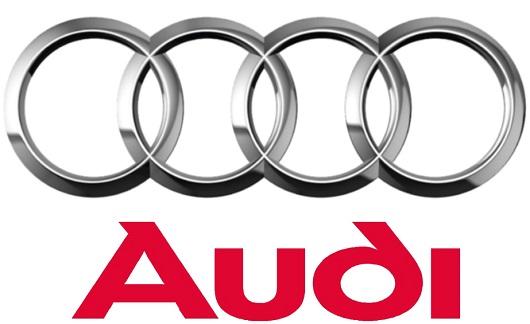
Компания «Audi» была одной из четырех компаний, которая в 1932 году объединились в автомобильный бренд «Auto Union». Но в 1964 году у этого авто-бренда произошол провал, компания «Volkswagen» купила половину бизнеса у фирмы «Auto Union» и переименовала компанию в первоночальный бренд вернув тем самым ей имя «Audi».
Смотрите также: Одинаковые автомобили под разными брендами
В настоящий момент бренд «Audi» является самой крупной частью крупнейшего в мире автоконцерна «Volkswagen».
«Bentley» — Принадлежит «Volkswagen»
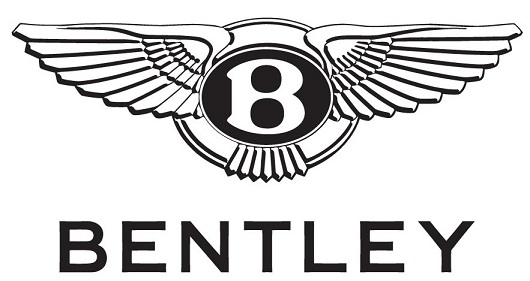
Компания «Bentley» за всю свою историю присутствотала на авторынке в качестве независимого производителя и продолжалось это всего 12 лет, вплоть до 1931 года. Затем данный автомобильный бренд стал частью компании «Rolls-Royce» которая в 1980 году продала фирму «Bentley» компании «Vickers». Далее «Vickers» продает бренд «Bentley» Немецкому автоконцерну «Volkswagen», который в это же самое время продал компанию «Rolls-Royce» автокомпании «BMW».
«Citroen / DS» — Принадлежит компании «Peugeot»
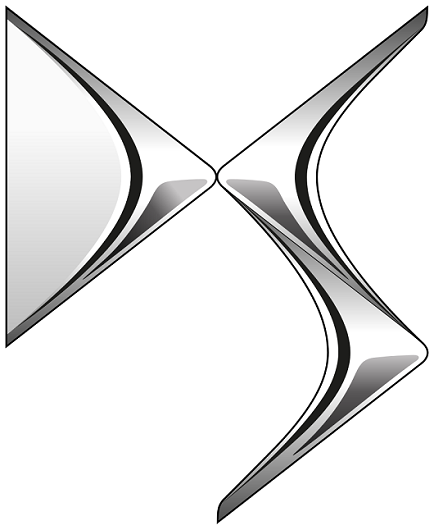
В 1934 году компания «Citroen» была отдана за долги компании «Michelin». А в 1976 году фирма «Citroen» была куплена компанией «Peugeot». Так на мировом рынке появился крупный автоконцерн «PSA Peugeot Citroen». В 2010 году на авторынке появился бренд «DS», который также стал принадлежать концерну «PSA Peugeot Citroen».
«Dacia» — Принадлежит фирме «Renault»

Компания «Dacia» была создана в Румынии в начале 1960-х годов, чтобы фирма «Renault» могла производить по лицензии доступные гражданам автомобили для внутреннего рынка. В итоге в 1999 году «Renault» покупает компанию «Dacia» и в настоящее время по-прежнему продолжает использовать этот авто-бренд для выпуска бюджетных моделей автомобилей. Но несмотря на выпуск для граждан автомобилей эконом-класса большинство моделей компании «Dacia» в настоящий момент уже используют многие новые технологии фирмы «Renault».
Смотрите также: Самые красивые автомобили Alfa-Romeo
«Ferrari» — Принадлежит фирме «Fiat»
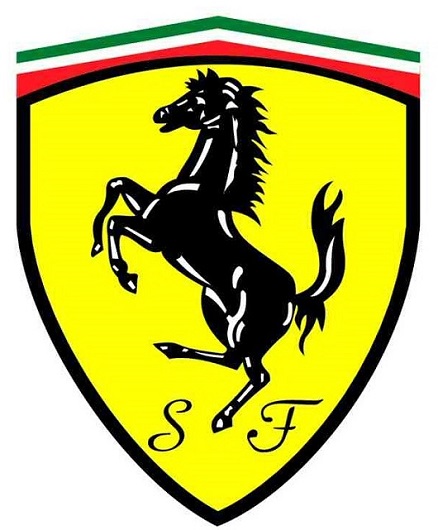
В 1969 году компания «Fiat» приобрела 50% пакет акций компании «Ferrari». Случилось это после того, как не состоялся планируемый выкуп этого Итальянского премиального бренда компанией «Ford». В конце-концов через определенное время компания «Fiat» просто увеличила свою долю акций и довела его до 90%. В 2014 году концерн «Fiat Chrysler» решил отделить авто-бренд «Ferrari» от основной группы. В конечном итоге эта сделка была завершена в 2016 году, а семья Аньелли, основавшая компанию «Fiat», стала одной из крупнейших акционеров фирмы «Ferrari».
«Infiniti» — Принадлежит фирме «Nissan»

Бренд «Infiniti» был изначально придуман специально для выхода компании «Nissan» на рынок премиум-автомобилей США, случилось это в 1990-е годы. Точно также поступила и компания «Honda» создавшая авто-бренд «Acura» для рынка США и компания «Toyota» выведя на рынок Соединенных Штатов авто-бренд «Lexus».
В 2008 году фирма «Infiniti» расширила свою деятельность по всему миру увеличив поставку своих автомобилей на территорию Европы. В настоящий время автомобильный бренд «Infiniti» по-прежнему принадлежит компании «Nissan».
«Jaguar» — Принадлежит компании «TATA»

Прошлые владельцы «Jaguar» продали его Индийской компании «Tata Motors». Сделка была заключена в 2008 году. «Tata Motors» на сегодняшний день является частью гигантской группы «Tata Group» в которую входят другие виды бизнеса, включая сюда гостиницы, спутниковое вещание и производство пакетированного чая. Вместе с компанией «Jaguar» была также продана и компания «Land Rover». Причина продаж двух популярных премиум-брендов одна, это тяжелое финансовое положение компании во время мирового кризиса.
«Jeep» — Принадлежит компании «Chrysler»
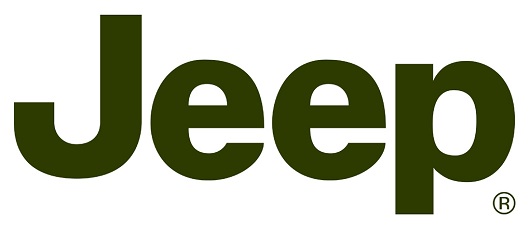
Прежде чем владельцем авто-бренда «Jeep» в 1987 году стала компания «Chrysler», этот Американский автопроизводитель внедорожных автомобилей принадлежал двум Американским компаниям тесно связаным с фирмами «Renault» и «Mercedes». В настоящий момент бренд «Jeep» является частью группы «Fiat-Chrysler».
«Kia» — Принадлежит компании «Hyundai»

Корейская компания «Kia» была независимой компанией на протяжении более 50 лет. Во время Азиатского финансового кризиса случившегося в 1997 году компания «Kia» обанкротилась. Но сам бренд «Kia» остался, и все благодаря спасению его компанией «Hyundai Motor», которая приобрела контрольный пакет акций фирмы «Kia», произошло это в 1998 году. В наши дни автокомпания «Kia» по-прежнему принадлежит фирме «Hyundai».
«Lamborghini» — принадлежит «Volkswagen»
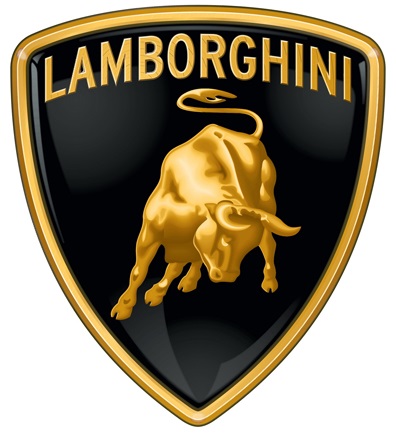
В конце 1980-х годов и в начале 1990-х компания «Lamborghini» принадлежала концерну «Chrysler». В настоящий момент «Lamborghini» входит в концерн «Volkswagen Group». Частью этой компании-концерна фирма «Lamborghini» стала в 1998 году, когда этот авто-бренд перешел под контроль фирмы «Audi».
«Land Rover» — Принадлежит компании «TATA»
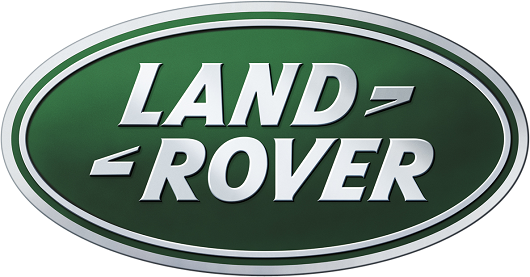
Компанией «Land Rover» за долгую историю автопромышленности владели многие известные автомобильные бренды, начиная например от «BMW» и заканчивая Американской компанией «Ford». Но в начале 2008 года данный авто-бренд «Land Rover» вместе с фирмой «Jaguar» перешел под контроль Индийского промышленного гиганта «Tata». Сразу после их поглощения эти два независимых авто-бренда «Land Rover» и «Jaguar» были объединены в одну компанию.
«Lexus» — Принадлежит компании «Toyota»

Авто-бренд «Lexus» полностью принадлежит компании «Toyota». Он является люксовым подразделением данной Японской компании. Как и «Acura», и «Infiniti» принадлежащие фирмам «Honda» и «Nissan» соответственно, данный бренд «Lexus» был выведен на рынок США а также и Великобритании для выхода и продажи на нем премиальных автомобилей.
«Lotus» — Принадлежит фирме «Proton»
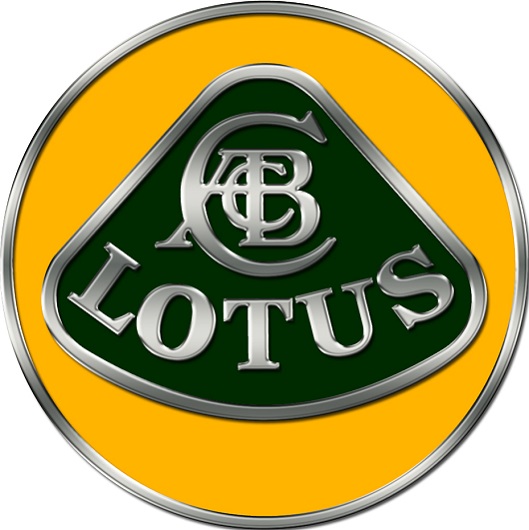
Малазийский автопроизводитель «Proton» в 1993 году купил компанию «Lotus» у Итальянского бизнесмена Романо Артиоли, который в те годы владел фирмой «Bugatti». Сегодня авто-бренд «Lotus» по-прежнему принадлежит фирме «Proton». Самое странное здесь то, что автомобили марки Lotus до сих пор выпускаются и продаются по всему миру (преимущественно в Англии), тогда как под брендом «Proton» выпуск автомобилей был полностью прекращен.
«Maserati» — Принадлежит автоконцерну «Fiat — Chrysler»

Фирма «Maserati» является 100% дочерней компанией «Fiat» начиная с 1993 года. Сегодня бренд «Maserati» принадлежит автоконцерну «Fiat-Chrysler».
«Mercedes» — Принадлежит компании «Daimler»
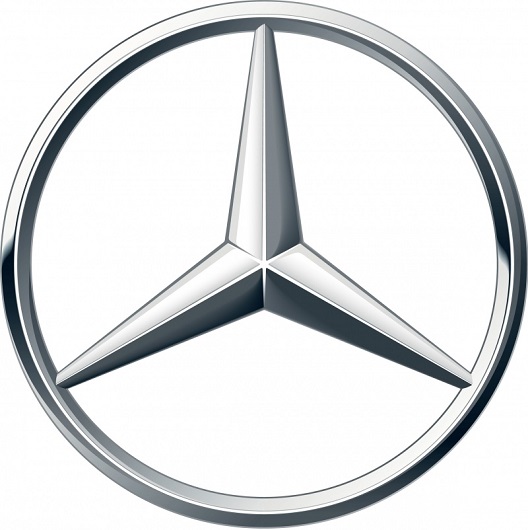
Фирма «Mercedes-Benz» является самым крупным и наиболее известным в мире автомобильным брендом и принадлежит корпорации «Daimler». Также корпорация «Daimler» владеет подразделением «Mercedes-AMG» и несколькими коммерческими производителями различных транспортных средств.
«MG» — Принадлежит фирме «Saic»
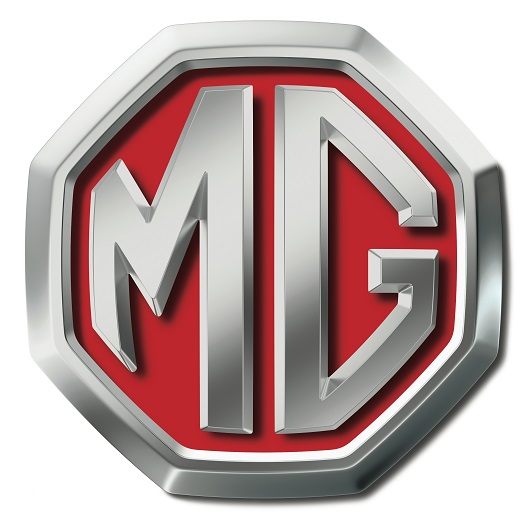
Фирма «MG» принадлежит сегодня Китайской компании, случилось это после того, как в 2005 году обанкротилась компания «MG Rover». Изначально этот бренд «MG» купила Китайская компания «Nanjing Automobile», ну а затем его перекупила Шанхайская компания «SAIC».
«Mini»— Принадлежит компании «BMW»
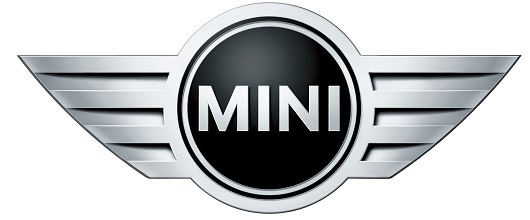
В 2000 году компания «BMW» продала принадлежащие ей авто-бренды «MG», «Rover» и «Land Rover», которые, как известно, входили в корпорацию «Rover Group». Но при продаже компания «BMW» все-же сохранила контроль над компанией «Mini». В итоге на данный момент компания «BMW» помимо бренда «Rolls-Royce» сохраняет контроль и над брендом «Mini».
«Mitsubishi» — Принадлежит «Nissan-Renault»
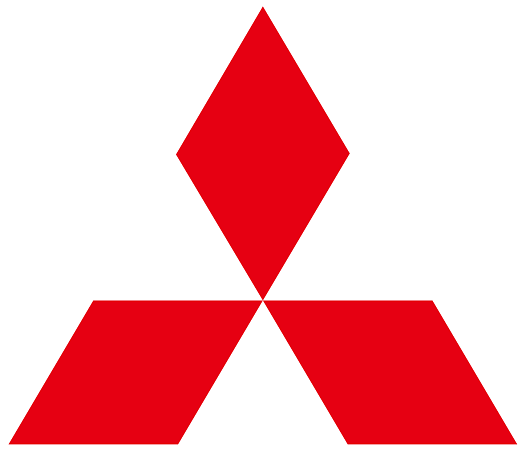
«Mitsubishi Motors» является автомобильным подразделением компании «Mitsubishi Group», которая помимо автопроизводства занимается еще и проектами в ядерной энергетике, в банковской деятельности и в других многих сферах бизнеса. В октябре 2016 года компания «Nissan» стала крупнейшим акционером компании «Mitsubishi» купив 34% акций. Таким образом компания «Mitsubishi» стала частью автоальянса «Renault-Nissan».
«Nissan» — Принадлежит автоальянсу «Renault — Nissan»
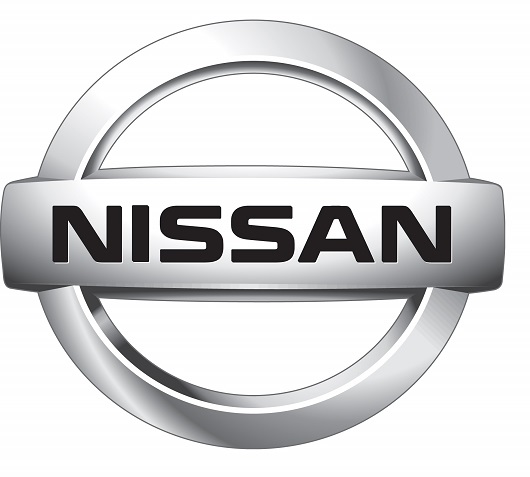
После нескольких лет финансовых трудностей компания «Nissan» в 1993 году вступила в союз с компанией «Renault». Чисто технически эти две компании являются отдельными фирмами. Но сами технологии, методы работы при производстве автомобилей у них остаются одинаковыми. Также у этого автоальянса и единый генеральный директор господин Карлос Гон. Фирма «Nissan» имеет меньшую долю в компании «Renault», тогда как «Renault» имеет уже большую долю в компании «Nissan», которая по своей сути является младшим партнером.
«Porsche» — Принадлежит компании (концерну) «Volkswagen»
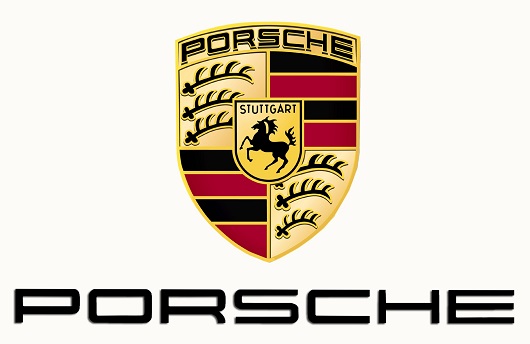
Производитель автомобилей Porsche является дочерней компанией «Volkswagen».
«Renault» — Принадлежит альянсу «Renault — Nissan»
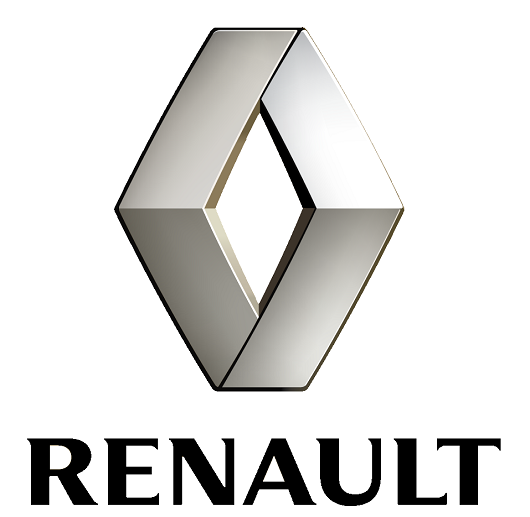
Когда-то компания «Renault» принадлежала Французскому правительству. В 1996 году компания была приватизирована. Но сегодня Франция по-прежнему имеет свою долю в фирме «Renault». В наши дни «Renault» входит в крупнейший в мире автоальянс «Renault-Nissan» в который недавно также вошла и компания «Mitsubishi».
«Rolls-Royce» — Принадлежит компании «BMW»
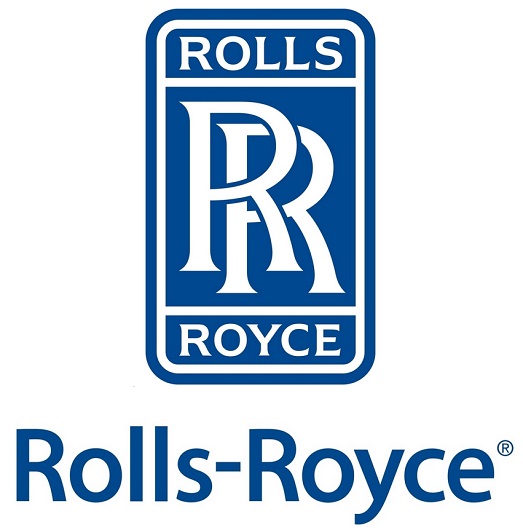
«Rolls-Royce Motors» был куплен фирмой «Volkswagen», случилось это в 1998 году. Пять лет спустя компания полностью перешла к фирме «BMW».
«Seat» — Принадлежит компании «Volkswagen»
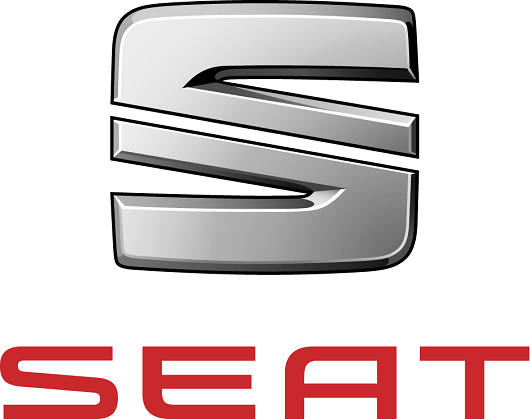
Начиная с 1986 года фирма «Seat» являлась единственным и крупнейшим автопроизводителем в Испании. С этого года эта фирма является частью компании «Volkswagen».
«Skoda» — Принадлежит компании «Volkswagen»
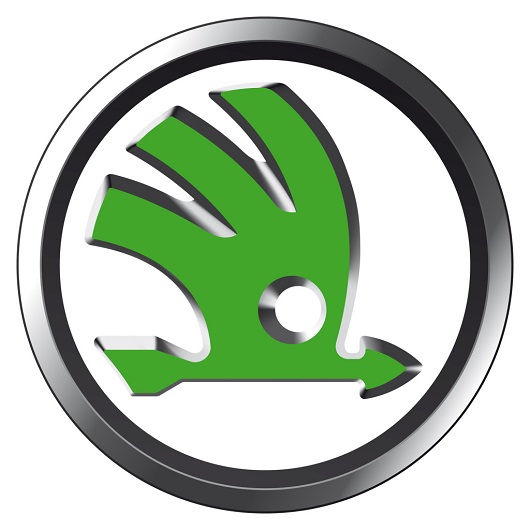
Компания «Volkswagen» начала покупать акции «Skoda» в 1991 году, случилось это в период больших перемен в бывшей Чехословакии. С 2000 года компания «Skoda» полностью принадлежит концерну «VW Group».
«Smart» — Принадлежит фирме «Daimler»
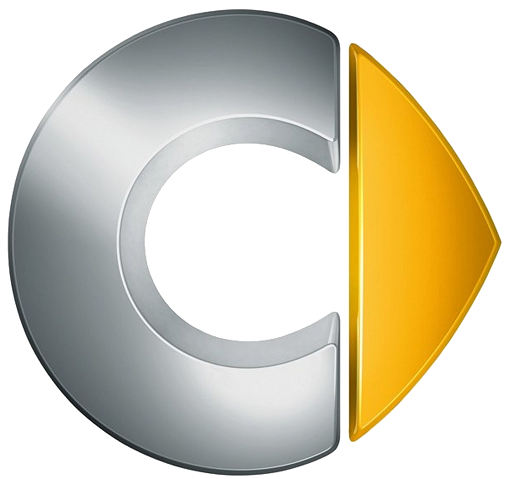
Изначально идея радикального городского автомобиля впервые была предложена владельцем производителем часов марки «Swatch». Теперь компания «Smart» полностью принадлежит фирме «Daimler».
«SsangYong» — Принадлежит компании «Mahindra & Mahindra»
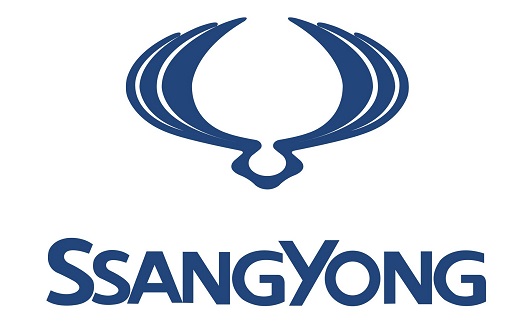
Хотя по-прежнему компания «SsangYong» базируется в Южной Корее в настоящее время основным собственником этого Корейского авто-бренда является Индийская компания «Mahindra & Mahindra», которая в 2011 году приобрела 70% акций этой Корейской компании.
«Subaru» — Принадлежит компании «Fuji»
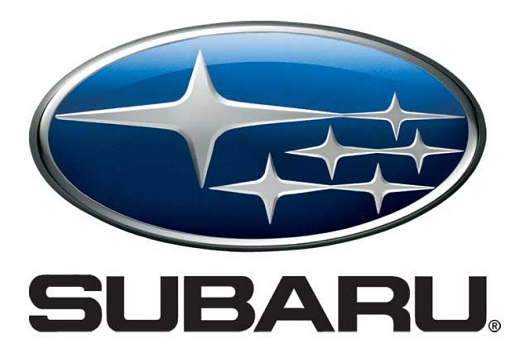
Авто-бренд «Subaru» принадлежит компании «Fuji Heavy Industries» (FHI), которая в скором времени изменит и поменяет свое название на «Subaru Corporation». В компанию «FHI» входит шесть независимых автомобильных компаний. Крупными акционерами компании являются фирмы «Toyota» и «Suzuki». Большую долю в ней имеет компания «Suzuki».
«Vauxhall / Opel» — Принадлежит «PSA» (Citroen- Peugeot)
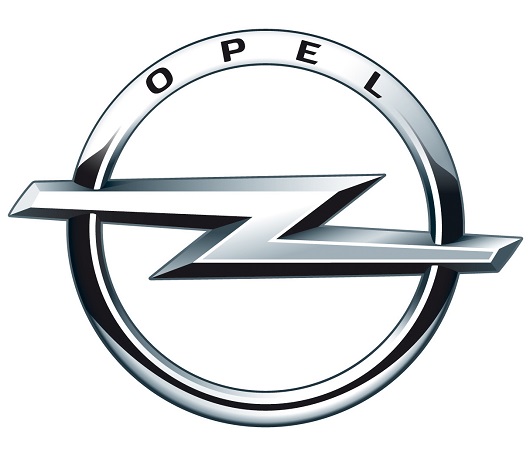
Автомобили Vauxhall и Opel несмотря на то, что позиционировались как Британские и Немецкие автомобильные бренды, на самом деле долгое время являлись частью крупнейшего в мире автопроизводителя компании «General Motors». Компания «General Motors» владела данными брендами «Vauxhall» и «Opel» начиная с 1925 года. В марте 2017 года было объявлено, что бренды «Vauxhall» и «Opel» переходят в собственность автоальянса «Citroen- Peugeot» (PSA).
«Volvo» — Принадлежит компании «Geely»
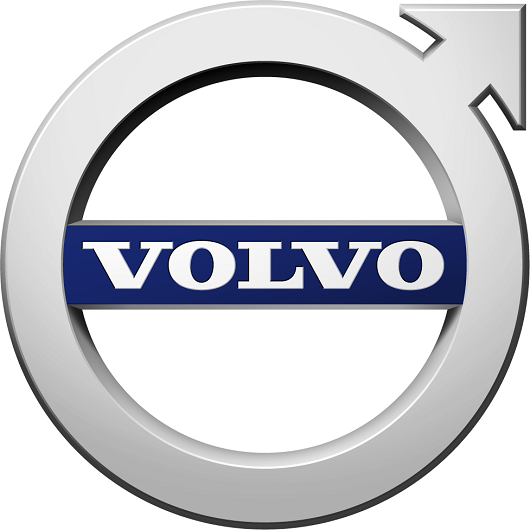
После того, как более 70 лет подряд компания «Volvo» была полностью независимым Шведским авто-брендом, произошло следующее. А именно, в 2000 году она вошла сначала в состав компании «Ford», а спустя 9 лет этот Шведский авто-бренд был продан Китайской компании «Geely».
«Лада АвтоВАЗ» — Принадлежит альянсу «Renault — Nissan» и «Ростеху»

В 2008 году контрольный пакет акций над автозаводом «АвтоВАЗ» получила компания «Renault».
«ГАЗ» — Принадлежит компании «Базовый элемент» Олега Дерипаски
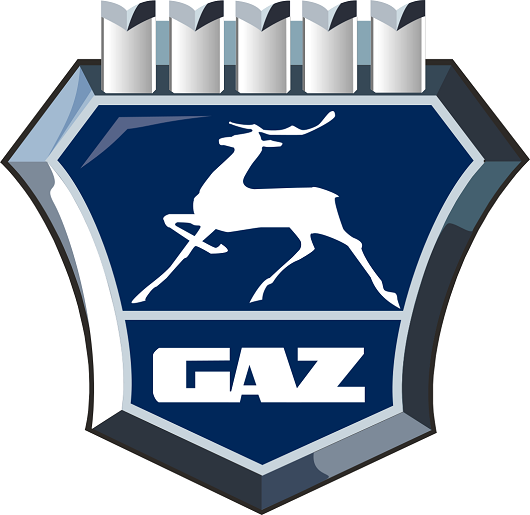
В 2000 году контрольный пакет ОАО «ГАЗ» был приобретён компанией «Базовый элемент» под управлением Олега Дерипаски. В 2001 году Горьковский автомобильный завод вошел в состав авто холдинга «РусПромАвто».
«Land Rover Ltd.» redirects here. For the 1948–1985 Land Rover model, made by the Rover Company, see Land Rover Series.
 |
|
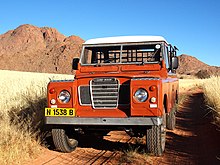 |
|
| Product type | Automobiles |
|---|---|
| Owner | Jaguar Land Rover (since 2013)[1] |
| Produced by | Jaguar Land Rover |
| Country | United Kingdom |
| Introduced | 1948; 75 years ago[2] |
| Related brands | Jaguar |
| Markets | Worldwide |
| Previous owners |
|
| Tagline | «Above & Beyond» |
| Website | landrover.com |
 |
|
| Industry | Automotive |
|---|---|
| Predecessor | British Leyland |
| Founded | 1978; 45 years ago |
| Founder | British Leyland |
| Defunct | 2012 |
| Fate | Car manufacturing merged with Jaguar Cars in 2013 as Jaguar Land Rover |
| Headquarters | Solihull, West Midlands (1978–2012) |
| Parent |
|
Land Rover is a British brand of predominantly four-wheel drive, off-road capable vehicles, owned by multinational car manufacturer Jaguar Land Rover (JLR), since 2008 a subsidiary of India’s Tata Motors.[3] JLR currently builds Land Rovers in Brazil, China, India, Slovakia, and the United Kingdom. The Land Rover name was created in 1948 by the Rover Company for a utilitarian 4WD off-road vehicle; currently, the Land Rover range is comprised solely of upmarket and luxury sport utility vehicles.
Land Rover was granted a Royal Warrant by King George VI in 1951,[4][5] and 50 years later, in 2001, it received a Queen’s Award for Enterprise for outstanding contribution to international trade.[6] Over time, Land Rover grew into its own brand (and for a while also a company), encompassing a consistently growing range of four-wheel drive, off-road capable models. Starting with the much more upmarket 1970 Range Rover, and subsequent introductions of the mid-range Discovery and entry-level Freelander line (in 1989 and 1997), as well as the 1990 Land Rover Defender refresh, the marque today includes two models of Discovery, four distinct models of Range Rover, and after a three-year hiatus, a second generation of Defenders have gone into production for the 2020 model year—in short or long wheelbase, as before.
For half a century (from the original 1948 model, through 1997, when the Freelander was introduced), Land Rovers and Range Rovers exclusively relied on their trademark boxed-section vehicle frames. Land Rover used boxed frames in a direct product bloodline until the termination of the original Defender in 2016; and their last body-on-frame model was replaced by a monocoque with the third generation Discovery in 2017. Since then all Land Rovers and Range Rovers have a unified body and frame structure.
Since 2010, Land Rover has also introduced two-wheel drive variants, both of the Freelander, and of the Evoque, after having built exclusively 4WD cars for 62 years.[7] The 2WD Freelander has been succeeded by a 2WD Discovery Sport, available in some markets.[8]
History
Originally, these vehicles were simply called the ‘Land Rover’ – an off-road capable car model of the Rover Company. As ‘Land Rover’ became established as a brand, the ‘Series’ indication later became a retronym model name.[9] The Range Rover was introduced in 1970, and the company became a British Leyland subsidiary in 1978. In 1983 and 1984, the long and the short wheelbase Land Rovers were finally given official names – the One Ten, and the Ninety respectively, and together they were badged the Defender models in 1990, after the 1989 introduction of the new Discovery model.
Rover era
Series I first registered January 1949
«HUE166 first production Land-Rover»
portraits of Spencer and Maurice Wilks
Series IIA long-wheelbase
Land Rover conversion to fight forest fires, Cascina, Italy (August 2016)
The design for the original vehicle was started in 1947 by Maurice Wilks. Wilks, chief designer at the Rover Company, on his farm in Newborough, Anglesey, working in conjunction with his brother Spencer who was the managing director of Rover.[10] The design may have been influenced by the Jeep[11] and the prototype, later nicknamed Centre Steer, was built on a Jeep chassis and axles.[12] The early choice of colour was dictated by military surplus supplies of aircraft cockpit paint, so early vehicles only came in various shades of light green. Starting with the series I Land Rover, all models in this era featured sturdy box-section ladder-frame chassis.[13] Early vehicles like the Series I were field-tested at Long Bennington and designed to be field-serviced.
After the formation of Land Rover Limited in 1978 the hyphen in Land-Rover —as shown in the logo— began to be dropped.[14]
Land Rover Ltd – subsidiary of BL
Land Rover as a company has existed since 1978. Prior to this, it was a product line of the Rover Company which was subsequently absorbed into the Rover-Triumph division of the British Leyland Motor Corporation (BL) following Leyland Motor Corporation’s takeover of Rover in 1967. The ongoing commercial success of the original Land Rover series models, and latterly the Range Rover in the 1970s in the midst of BL’s well-documented business troubles prompted the establishment of a separate Land Rover company but still under the BL umbrella, remaining part of the subsequent Rover Group in 1988, under the ownership of British Aerospace after the remains of British Leyland were broken up and privatised.
BMW era
On 31 January 1994, Rover Group plc, including Land Rover, was acquired by BMW. In 2000, Rover Group was broken up by BMW and Land Rover was sold on to Ford Motor Company, becoming part of its Premier Automotive Group. The transition to BMW ownership only just preceded the introduction of the second generation Range Rover, prior to launching Land Rover’s first unibody model, the Freelander in 1997. BMW was then responsible for much of the development of the Range Rover III—the first to have a monocoque structure and independent suspension, introduced under Ford in late 2001.[15]
Ford era
After the introduction of the all-new Range Rover in 2001, Ford moved Land Rover further away from its traditional boxed ladder-frames, by introducing a new generation Discovery featuring «Integrated Body Frame», in 2004. From then on, only the Defender continued on Land Rover’s traditional since 1948 underpinnings. Use of the Rover V8 engine in Land Rovers also ended with the replacement of the mk. II Discovery.
In 2006 Ford also purchased the Rover brand from BMW for around £6 million. BMW had retained ownership of the brand to protect the integrity of the Land Rover brand, with which ‘Rover’ might be confused in the US 4×4 market, and allowed it to be used under licence by MG Rover until it collapsed in 2005, at which point it was offered to the Ford Motor Company, who by then owned Land Rover. On 11 June 2007, Ford announced that it planned to sell Land Rover along with Jaguar Cars. Private equity firms such as Alchemy Partners of the UK, TPG Capital, Ripplewood Holdings, Cerberus Capital Management and One Equity Partners of the US, Tata Motors of India and a consortium comprising Mahindra & Mahindra of India and Apollo Management all initially expressed interest in purchasing the marques from the Ford Motor Company.[16][17] On 1 January 2008, Ford formally declared that Tata was the preferred bidder.[18] On 26 March 2008, Ford announced that it had agreed to sell its Jaguar and Land Rover operations to Tata Motors, and that it expected to complete the sale by the end of the second quarter of 2008.[19]
Tata Motors era
On 18 January 2008, Tata Motors, a part of the Tata Group, established Jaguar Land Rover Limited as a British-registered and wholly owned subsidiary. The new company was to be used as a holding company for the acquisition of the two businesses from Ford—Jaguar Cars Limited and Land Rover. That acquisition was completed on 2 June 2008 at a cost of £1.7 billion.[20][21][22][23] Included in the deal to buy Land Rover and Jaguar Cars were the rights to three other British brands: the Daimler marque, as well as two dormant brands Lanchester and Rover.[24]
On 1 January 2013, the group, which had been operating as two separate companies (Jaguar Cars Limited and Land Rover), although on an integrated basis, underwent a fundamental restructuring. The parent company was renamed to Jaguar Land Rover Automotive PLC, Jaguar Cars Limited was renamed to Jaguar Land Rover Limited and the assets (excluding certain Chinese interests) of Land Rover were transferred to it. The consequence was that Jaguar Land Rover Limited became responsible in the UK for the design, manufacture and marketing of both Jaguar and Land Rover branded products, and Land Rover and Jaguar Cars ceased to be separate vehicle producing entities.[25]
Timeline
- 1947: Rover’s chief designer Maurice Wilks and his associates create a prototype using Jeep chassis and components[26]
- 1948: The first Land Rover was officially launched on 30 April 1948, at the Amsterdam Motor Show
- 1958: Series II launched
- 1961: Series IIA began production
- 1967: Rover becomes part of Leyland Motors, later British Leyland (BL) as Rover Triumph
- 1970: Introduction of the Range Rover
- 1971: Series III launched
- 1974: Land Rover abandons US market[27] facing competitive pressure from Japanese 4×4 brands
- 1975: BL collapses and is nationalised, publication of the Ryder Report recommends that Land Rover be split from Rover and be treated as a separate company within BL and becomes part of the new commercial vehicle division called the Land Rover Leyland Group
- 1976: One-millionth Land Rover leaves the production line
- 1978: Land Rover Limited formed as a separate subsidiary of British Leyland[28]
- 1980: Rover car production ends at Solihull with the transfer of SD1 production to Cowley, Oxford; Solihull is now exclusively for Land Rover manufacture. 5-door Range Rover introduced
- 1983: Land Rover 90 (Ninety)/110 (One-Ten)/127 (renamed Defender in 1990) introduced
- 1986: BL plc becomes Rover Group plc; Project Llama started
- 1987: Range Rover is finally introduced to the US market, following many years of demand being filled by grey market sales[29][30]
- 1988: Rover Group is privatised and becomes part of British Aerospace, and is now known simply as Rover
- 1989: Introduction of Discovery
- 1990: The Ninety and One-Ten range of models are given the generic name of Defender
- 1994: Rover Group is taken over by BMW. Introduction of second-generation Range Rover. (The original Range Rover was continued under the name ‘Range Rover Classic’ until 1995)
- 1997: Land Rover introduces the Special Edition Discovery XD with AA yellow paint, subdued wheels, SD type roof racks, and a few other off-road upgrades directly from the factory. Produced only for the North American market, the Special Vehicles Division of Land Rover created only 250 of these bright yellow SUVs.
- 1997: Introduction of Freelander
- 1998: Introduction of mark II Discovery
- 2000: BMW breaks up the Rover Group and sells Land Rover to Ford for £1.8 billion[31]
- 2002: Introduction of third-generation Range Rover
- 2004: Introduction of second-generation Discovery, marketed as the Discovery 3, or LR3, depending on market
- 2005: Introduction of Range Rover Sport
- 2005: Adoption of Jaguar AJ-V8 engine to replace the BMW M62 V8 in the Range Rover
- 2006: Announcement of a new 2.4-litre diesel engine, 6-speed gearbox, dash and forward-facing rear seats for Defender. Introduction of the second generation of Freelander (Freelander 2). Ford acquires the Rover trademark from BMW, who previously licensed its use to MG Rover Group
- 8 May 2007: 4,000,000th Land Rover rolls off the production line, a Discovery 3 (LR3), donated to The Born Free Foundation
- 12 June 2007: Announcement from the Ford Motor Company that it plans to sell Land Rover and also Jaguar Cars
- August 2007: Tata Motors and Mahindra & Mahindra as well as financial sponsors Cerberus Capital Management, TPG Capital and Apollo Global Management expressed their interest in purchasing Jaguar Cars and Land Rover from the Ford Motor Company.[32]
- 26 March 2008: Ford agreed to sell the Jaguar and Land Rover operations to Tata Motors.[19]
- 2 June 2008: Tata Motors finalised their purchase of Jaguar and Land Rover from Ford and put them into their new subsidiary, Jaguar Land Rover[20]
- 2010: Introduction of Discovery 4 / LR4
- 2011: The Range Rover Evoque introduced
- 2012: Fourth-generation Range Rover was exhibited at the 2012 Paris Motor Show
- 1 January 2013: Land Rover and Jaguar Cars merged to form a single company, Jaguar Land Rover Limited, producing vehicles under both marques
- 2014: The New Discovery Range was unveiled at the 2014 New York Motor Show[33]
- 1 March 2017: The Range Rover Velar was unveiled in London[34]
- June 2018: representatives of the company Land Rover announced the launch of a new project called «Cortex», for the implementation of which will be spent about $5 million. The goal of this project is «to create self-propelled cars-robots that are able to independently navigate off-road in all weather conditions.»[35]
- September 2019: Land Rover announces it is working on a remote control system for its new Defender that would allow low-speed driving from outside the car[36][37]
- 2020: Land Rover Defender (L663) is released.
Manufacturing
Jaguar Land Rover manufactures Land Rover cars in plants in five countries.[38] In the United Kingdom the Range Rover, Range Rover Sport and Range Rover Velar are built at their Solihull plant near Birmingham and the Discovery Sport and Evoque are built at their Halewood plant near Liverpool. In October 2018 JLR opened a new plant in Nitra, Slovakia to build the Discovery,[38] and are now also building the 2020 Defender there.[39] In Brazil the company builds both the Discovery Sport and Evoque in their plant in Itatiaia which was opened in June 2016.[38] JLR has been building cars since 2011 in Pune, India and currently builds the Discovery Sport and Evoque there.[38] Under a 50/50 joint venture with Chery at Changshu in China Discovery Sports and Evoques are also built.[38]
Historically Land Rovers were manufactured primarily at the Solihull plant until production of the Freelander was moved to the Halewood plant. The Freelander was also assembled in CKD form at Land Rover’s facility in Pune, India.[40] As of 2015, the company continued to expand by building locally in India as well as increasing the number of models made at JLR’s Chikhali facility near Pune to include the Discovery Sport and Evoque.[41]
Defender models were assembled under licence in several locations worldwide, including Spain (Santana Motors), Iran (Pazhan Morattab), Brazil (Karmann), and Turkey (Otokar).[42]
Global sales
Global and regional unit sales
Worldwide sales of Land Rover tripled from model year 2008/’09 to 2014/’15 (from almost 130,000 to some 385,000 units), to peak at a further 10% higher in ’15/’16 and ’16/’17, and have since slid by some 100,000 (to 320,000 units) in 2018/’19.[43] In spite of the facts, that Australia and New Zealand were important Land Rover markets in the 20th century, and sales in the Asia Pacific region have quadrupled from 2008/’09 to 2014/’15, Land Rover have stopped publishing sales of that region separately – instead including them in «Rest of World» starting 2015/’16.
Overall, Europe is the firm’s primary market, consistently yielding 40% to 50% of global units sold. Generally, half of that is down to the home (UK) market. Sales in the U.K. and the U.S. have generally kept equal pace, but since 2012 China has taken the lead as Land Rover’s biggest single country market, except for 2018/’19.[43]
Per calendar year: [44]
| Year | 2009 | 2010 | 2011 | 2012 | 2013 | 2014 | 2015 | 2016 |
|---|---|---|---|---|---|---|---|---|
| Units sold | 144,371 | 181,395 | 223,602 | 303,926 | 348,338 | 381,108 | 403,079 | 434,582 |
Per model year: [43]
| model year | United Kingdom | Europe (continent) | North America | China* | Asia Pacific** | Rest of world | Total |
|---|---|---|---|---|---|---|---|
| ’08 / ’09 | 25,197 | 33,040 | 23,008 | 7,536 | 5,436 | 34,327 | 128,544 |
| ’09 / ’10 | 39,085 | 39,086 | 29,319 | 14,962 | 6,092 | 28,633 | 157,177 |
| ’10 / ’11 | 42,125 | 42,732 | 36,041 | 26,009 | 7,288 | 34,892 | 189,087 |
| ’11 / ’12 | 46,257 | 58,213 | 44,136 | 44,622 | 10,485 | 47,919 | 251,632 |
| ’12 / ’13 | 57,186 | 70,252 | 49,931 | 67,579 | 14,008 | 57,087 | 316,043 |
| ’13 / ’14 | 60,019 | 71,525 | 56,214 | 83,186 | 17,787 | 65,058 | 353,789 |
| ’14 / ’15 | 68,882 | 78,140 | 61,555 | 95,528 | 21,548 | 59,626 | 385,279 |
| ’15 / ’16 | 79,723 | 103,683 | 83,133 | 79,937 | 80,646 | 427,122 | |
| ’16 / ’17 | 85,623 | 100,711 | 81,949 | 95,856 | 67,022 | 431,161 | |
| ’17 / ’18 | 58,417 | 78,836 | 68,519 | 89,975 | 56,224 | 351,971 | |
| ’18 / ’19 | 60,791 | 60,168 | 83,389 | 57,801 | 57,882 | 320,031 | |
| * China includes data for 2015/16 onwards of Chery Jaguar Land Rover (CJLR) sales. ** Asia Pacific is merged into the rest of world heading from 2015/16 onwards. |
Unit sales by model
The Discovery Sport is the most successful Land Rover model, selling 95,520 units globally in 2018. This was followed by another ‘sports’ model, the Range Rover Sport, at 77,847 units.[43]
The Discovery Sport is the successor to the brands Freelander model, which was Europe’s best selling 4×4 for five years in a row, after its market introduction in 1997.[45]
Models
Series IIB Forward Control
6-wheel Land Rover Defender, Hong Kong Police Bomb Disposal
2016 Land Rover Discovery 4 — front
2016 Land Rover Discovery 4 — rear
2016 Land Rover Defender 110 Station Wagon
2015 Land Rover Defender 110 XS TD DC
2016 Range Rover Autobiography
Historic
- Series I, II, IIA and III
- Freelander (sold in some markets as LR2)
Current
- Defender
- Discovery
- Discovery Sport
- Range Rover
- Range Rover Sport
- Range Rover Velar
- Range Rover Evoque
Concepts
Range Stormer – Land Rover’s first concept vehicle, unveiled at the 2004 North American International Auto Show, later became the Range Rover Sport. (Gritzinger, 2004).
Land Rover LRX – Land Rover’s second concept vehicle, first unveiled at the 2008 Detroit Auto Show. Originally a vehicle with ERAD technology, the production version did not include this. The car was then launched in 2011 as the Range Rover Evoque, and was the first Range Rover branded product to be offered with front wheel drive, and no low ratio transfer box.
Land Rover DC100 – Land Rover’s third concept vehicle, first unveiled at the 2011 Frankfurt Auto Show, designed to be a replacement for the Land Rover Defender, though it is unlikely that the Defender’s replacement will be exactly the same as the DC100 concept.
Land Rover Discovery Vision Concept – Land Rover’s fourth concept vehicle, first unveiled at the 2014, was designed to be a replacement for the Land Rover Discovery, This concept features Transparent Bonnet, Suicide doors, and Laser assisted lamps (there is a very little chance this will be included in any future production vehicles).
Military
Models developed for the UK Ministry of Defence (MoD) include:
- 101 Forward Control – also known as the «Land Rover One Tonne FC»
- 1/2 ton Lightweight – airportable military short-wheelbase from the Series 2a
- Land Rover Wolf – an uprated Military Defender
- Snatch Land Rover – Land Rover with composite armoured body in UK Armed Forces Service
- 109 Series IIa and III ambulance (body by Marshalls of Cambridge)
- Range Rover ‘6×6’ Fire Appliance (conversion by Carmichael and Sons of Worcester) for RAF airfield use
- 130 Defender ambulance
- ‘Llama’ prototypes for 101 replacement
Models developed for the Australian Army
- Land Rover Perentie 4×4 and 6×6
Engines
During the history of the Land Rover many different engines have been fitted:
- The inlet-over-exhaust petrol engines («semi side-valve»), in both four- and six-cylinder variants, which were used for the very first Land Rovers in 1948, and which had their origins in pre-war Rover cars. Displacement of the first models was 1,600 cc.
- The four-cylinder overhead-valve engines, both petrol and diesel, which first appeared (in diesel form) in 1957, near the end of Series One production, and evolved over the years to the 300 TDi turbodiesel, which remains in production today for some overseas markets.
- The Buick-sourced all aluminium Rover V8 engine.
- 1,997 cc Petrol, inlet-over-exhaust: Series I engine, carried over for the first few months of Series II production.
- 2,052 cc Diesel, overhead-valve: Land Rover’s first diesel engine, and one of the first small high-speed diesels produced in the UK. It appeared in 1957, and was used in Series II production until 1961. Looks almost identical to the later 2,286 cc engine, but many internal differences. It produced 51 bhp (38 kW).
- 2,286 cc Petrol, overhead-valve, three-bearing crank:
- 2,286 cc Diesel, overhead-valve, three-bearing crank: Appeared in 1961 alongside the redesigned 2,286 cc petrol engine at the start of Series IIA production, and shared its cylinder block and some other components. It produced 62 bhp (46 kW).
- 2,625 cc Petrol, inlet-over-exhaust: Borrowed from the Rover saloon range, in response to demands from mid-1960s Land Rover users for more power and torque.
- 2,286 cc petrol/diesel, overhead-valve type 11J: five-bearing crank: In 1980, Land Rover finally did something about the crank failures which had plagued its four-cylinder engines for 22 years. These engines lasted beyond the end of Series III production and into the first couple of years of the new Ninety and One Ten ranges.[46]
- 3,258 cc V8 Petrol: The ex-Buick all alloy V8 engine appeared in the Range Rover right from the start of production in 1970, but did not make its way into the company’s utility vehicles until 1979.
- 2,495 cc petrol, overhead valve: The final development of Land Rover’s ohv petrol ‘four’, with hardened valve seats which allow running on unleaded (or LPG).
- 2,495 cc diesel, overhead valve, type 12J: Land Rover reworked the old ‘two and a quarter’ diesel for the 1980s. The injection pump was driven off a toothed belt at the front of the engine (together with the camshaft), a change compared with the older diesels.
- 2,495 cc turbodiesel, overhead valve, type 19J
- 2,495 cc turbodiesel, overhead valve, 200TDi and 300TDi: Used in the Defender and Discovery from 1990. The cylinder block was similar to the previous engine, although strengthened but the cylinder head was all-new and a direct injection fuel system was used.
- 2,495 cc turbodiesel, five-cylinder, TD5: An all-new engine for the second generation Discovery, and the Defender featuring electronic control of the fuel injection system, ‘drive by wire’ throttle, and other refinements
- The original Freelander models were available with various Rover K-series engines.
- In beginning of 2015 they start to use the all new Ingenium engine family, to replaced Ford sourced engines.
As of August 2012, most Land Rovers in production are powered by Ford engines.[47] Under the terms of the acquisition, Tata has the right to buy engines from Ford until 2019.[48]
Electric vehicles
Integrated Electric Rear Axle Drive (ERAD) technology, dubbed e-terrain technology,[49] will allow the vehicle to move off without starting the engine as well as supplying extra power over tough terrain.[49] Land Rover’s Diesel ERAD Hybrid was developed as part of a multimillion-pound project supported by the UK Government’s Energy Saving Trust, under the low carbon research and development programme. ERAD programme is one of a broad range of sustainability-focused engineering programmes that Land Rover is pursuing, brought together by the company under the collective name «e TERRAIN Technologies».[50]
Land Rover presented at the 2008 London Motor Show its new ERAD diesel-electric hybrid in a pair of Freelander 2 (LR2) prototypes. The new hybrid system is being designed as a scalable and modular system that could be applied across a variety of Land Rover models and powertrains.[51]
Land Rover unveiled the LRX hybrid concept at the 2008 North American International Auto Show in Detroit, for it to be going into production.[52] An ERAD will enable the car to run on electric power at speeds below 20 mph (32 km/h).[53]
In September 2011, the Range Rover Evoque was launched, though it was based on the LRX hybrid concept presented at the 2008 North American International Auto Show, it did not include the ERAD system, included in the original concept.
In February 2013, Land Rover unveiled[54][55] at the 83rd Geneva Motor Show an All-Terrain Electric Defender that produces zero emissions. The electric vehicle was developed for research purposes following successful trials of the Defender-based electric vehicle, Leopard 1. The vehicle is capable of producing 70 kW and 330 Nm of torque and has a range of 80 kilometres or in low speed off-road use it can last for up to eight hours before recharging.
Abilities
Power take-off (PTO) was integral to the Land Rover concept from 1948, enabling farm machinery and many other items to be run with the vehicle stationary. Maurice Wilks’ original instruction was «…to have power take-offs everywhere!» The 1949 report by British National Institute of Agricultural Engineering and Scottish Machinery Testing Station contained this description: «the power take-off is driven through a Hardy Spicer propeller shaft from the main gearbox output and two interchangeable pinions giving two ratios. The PTO gearbox casing is bolted to the rear chassis cross-member and an 8 by 8 inches (200 mm × 200 mm) belt pulley driven from the PTO shaft through two bevel gears can be bolted to the PTO gearbox casing.» PTOs remained regular options on Series I, II and III Land Rovers up to the demise of the Series Land Rover in 1985. An agricultural PTO on a Defender is possible as a special order.
Land Rovers (the Series/Defender models) are available in a variety of body styles, from a simple canvas-topped pick-up truck to a twelve-seat fully trimmed station wagon. Both Land Rover and out-of-house contractors have offered conversions and adaptations to the basic vehicle, such as fire engines, excavators, ‘cherry picker’ hydraulic platforms, ambulances, snowploughs, and six-wheel-drive versions, as well as one-off special builds including amphibious Land Rovers and vehicles fitted with tracks instead of wheels.
Military use
Various Land Rover models have been used in a military capacity, most notably by the British Army and Australian Army. Modifications may include military «blackout» lights, heavy-duty suspension, uprated brakes, 24 volt electrics, convoy lights, electronic suppression of the ignition system, blackout curtains and mounts for special equipment and small arms. Dedicated military models have been produced such as the 101 Forward Control and the air-portable 1/2 ton Lightweight. Military uses include light utility vehicle; communications platform; weapon platform for recoilless rifles, Anti-tank (e.g. TOW or M40 recoilless rifle) / Surface-to-Air Guided Weapons or machine guns; ambulances and workshops. The Discovery has also been used in small numbers, mostly as liaison vehicles.
Two models that have been designed for military use from the ground up are the 101 Forward Control from the early 1970s and the Lightweight or Airportable from the late 1960s. The latter was intended to be transported under a helicopter. The Royal Air Force Mountain Rescue Service (RAFMRS) teams were early users in the late 1950s and early 1960s, and their convoys of Land Rovers and larger military trucks are a sight often seen in the mountain areas of the United Kingdom. Originally RAFMRS Land Rovers had blue bodies and bright yellow tops, to be better seen from above. In 1981, the colour scheme was changed to green with yellow stripes. More recently, vehicles have been painted white, and are issued with fittings similar to civilian UK Mountain Rescue teams.
An adaptation of Land Rovers to military purposes is the «Pink Panther» models. Approximately 100 Series IIA models were adapted to reconnaissance use by British special operations forces the SAS. For desert use they were often painted pink, hence the name. The vehicles were fitted with among other gear a sun compass, machine guns, larger fuel tanks and smoke dischargers. Similar adaptations were later made to Series IIIs and 90/110/Defenders.[56]
The Australian Army adapted the Land Rover Series 2 into the Long Range Patrol Vehicle for use by the Special Air Service Regiment and as an anti-tank «gunbuggy» fitted with an M40 recoilless rifle.
The 75th Ranger Regiment of the United States Army also adapted twelve versions of the Land Rover that were officially designated the Ranger Special Operations Vehicle.
Series and Defender models have also been armoured. The most widespread of these is the Shorts Shorland, built by Shorts Brothers of Belfast. The first of these were delivered in 1965 to the Royal Ulster Constabulary, the Northern Ireland police force. They were originally 109-inch (2,800 mm) wheelbase models with an armoured body and a turret from the Ferret armoured car. By 1990, there had been more than 1,000 produced.[57]
In the 1970s, a more conventional armoured Land Rover was built for the Royal Ulster Constabulary in Wales called the Hotspur. The Land Rover Tangi was built by the Royal Ulster Constabulary’s own vehicle engineering team during the 1990s. The British Army has used various armoured Land Rovers, first in Northern Ireland but also in more recent campaigns. They first added protective panels to Series General Service vehicles (the Vehicle Protection Kit (VPK)). Later they procured the Glover Webb APV and finally the Courtaulds (later NP Aerospace) Composite Armoured Vehicle, commonly known as Snatch. These were originally based on heavy-duty V8 110 chassis but some have recently been re-mounted on new chassis from Otokar of Turkey and fitted with diesel engines and air-conditioning for Iraq. Although these now have more in common with the ‘Wolf’ (Defender XD) Land Rovers that many mistakenly confuse them with, the Snatch and the Wolf are different vehicles.
The most radical conversion of a Land Rover for military purposes was the Centaur half-track. It was based on a Series III with a V8 engine and a shortened belt drive from the Alvis Scorpion light tank. A small number was manufactured, and they were used by Ghana, among others.
The Land Rover is used by military forces throughout the world. The current generation of Land Rover used by British Army, the Snatch 2, have upgraded and strengthened chassis and suspension compared to civilian-specification vehicles. There is also the Land Rover WMIK (weapon mounted installation kit) used by British Army. The WMIK consists of a driver, a raised gun, usually a Browning heavy machine gun or a grenade machine gun, this used for ground support, and a GPMG (general-purpose machine gunner) located next to the driver, this used for vehicle protection.
Competitive use
Highly modified Land Rovers have competed in the Dakar Rally and won the Macmillan 4×4 UK Challenge almost every year, as well as having been the vehicle used for the Camel Trophy. Now, Land Rover has its own G4 challenge.[58]
Driver training
Land Rover Experience was established in 1990, and consists of a network of centres throughout the world, set up to help customers get the most out of their vehicles’ on and off-road capability. The flagship centres are Land Rover’s bases at Solihull, Eastnor, Gaydon and Halewood. Courses offered include off-road driving, winching and trailer handling, along with a variety of corporate and individual ‘Adventure Days’. The factory centres at Solihull and Halewood have manufacturing tours, while Gaydon has an engineering tour.
Safety
Model-by-model road accident statistics from the UK Department for Transport show that the Land Rover Defender is one of the safest cars on British roads as measured by chance of death in two-car injury accidents.[59]
The figures, which were based on data collected by police forces following accidents between 2000 and 2004 in Great Britain, showed that Defender drivers had a 1% chance of being killed or seriously injured and a 33% chance of sustaining any kind of injury. Other four-wheel-drive vehicles scored equally highly, and collectively these vehicles were much safer for their passengers than those in other classes such as passenger cars and MPVs. These figures reflect the fact that drivers of large mass vehicles are likely to be safer, often at the expense of other drivers if they collide with smaller cars.
Clubs
The original Land Rover Owners Club was set up by the Rover Company in 1954. The company published the Land Rover Owners Club Review magazine for members from 1957 to 1968 when the club became the Rover Owners Association. This original association fell away when the company merged with British Leyland.
There are many Land Rover clubs throughout the UK and internationally. Land Rover clubs break down into a number of groups of varying interests.
Single Marque Clubs – Bring together owners of a specific model or series of vehicle such as the Land Rover Series One Club,[60] or the Discovery Owners Club.[61] Single marque clubs have a global membership.
Special Vehicle Clubs – At various times Land Rover have produced vehicles for specific events or on a specific theme, most notable are the Camel Trophy and G4 Challenge vehicles which have been sold on to the general public, and a range of Defenders that were loosely based on the custom vehicles produced for the Tomb Raider motion picture.
Regional Clubs in the UK break down into two groups, competitive and non-competitive. The non-competitive clubs activities generally relate to social events, off-road driving or green laning on un-surfaced public highways or ‘pay and play’ days at off-road centres. Competitive clubs are a phenomenon almost exclusively found within the UK, who as well as the non-competitive activities detailed above run competitive events such as Tyro, Road Taxed Vehicle (RTV) and Cross Country Vehicle (CCV) trials, winch and recovery challenges or speed events such as Competitive Safaries. All UK competitive events are run within the framework of rules created by the Motor Sports Association (MSA) with further vehicle specific rules applied by the host club or association. Outside of the UK regional clubs are independent and mostly non-competitive.
A number of clubs are affiliated to the Association of Land Rover Clubs (ALRC);[62] formerly known as the Association of Rover Clubs (ARC) the association applies its own vehicle regulations to all of its member clubs who have the opportunity to compete together at regional events and an annual national event with vehicles approved to the same standard. In recent years some non-competitive clubs have dropped their affiliation fifth ALRC. Few clubs outside of the UK are affiliated with ALRC.[63] Other than ALRC and the short lived Association of North American Rover Clubs (ANARC), which was created 1998 to celebrate Land Rover’s 50th anniversary and disbanded in 2001, other groups of Land Rover clubs have affiliated with each other.
Land Rover owners were also early adopters of virtual clubs that are entirely based online. Bill Caloccia[64] created the original Land Rover Owner[65] email list (LRO) as single marque offshoot of the British Cars email list in May 1990.[66] Bill later created email lists in the mid-1990s for Range Rovers (RRO) and various regions (e.g., UK-LRO, AU-LRO, ZA-LRO, EU-LRO, IT-LRO, NL-LRO). In California members of the LRO list created mendo_recce in 1995.[67]
In 2005, under Ford ownership, Land Rover became more interested in the club environment. An internal club was formed, The Land Rover Club,[68] exclusive to employees of Ford’s Premier Automotive Group (Now exclusive to the new ‘Jaguar – Land Rover’ group since the brand moved away from the Ford stable). Also, an agreement was generated to allow other clubs to use the Land Rover green oval logo under licence. In 2006, the Bedfordshire, Hertfordshire and Cambridgeshire club were the pilot licensees for the new agreement, who now benefit from a reciprocal arrangement where their own logo is trade marked[69] and owned by Land Rover and they can refer to themselves as a ‘Land Rover Approved Club’.
Brand extensions
Bicycles
In 1995, Land Rover endorsed the production of a hand-made bicycle using its logo. The bicycle, called the Land Rover APB and manufactured by Pashley Cycles of Stratford-upon-Avon,[70] was the collapsible version of Pashley Cycles’ Moulton APB (All Purpose Bicycle) model, with leading link front suspension and adjustable damping and stroke. Two more models immediately followed: the Land Rover XCB V-20, aimed primarily at younger riders (children); and the Land Rover XCB D-26, also available as the M26 with hydraulic rim brakes, front suspension and suspension seat pillar.
In June 2004, Land Rover released a comprehensive 25 model range of bicycles. The three main ranges are the «Defender», the «Discovery», and the «Freelander», each with different attributes. The «Discovery» is an all-rounder bicycle suited to a variety of terrains, «Defender» is most suited to rugged terrain and off-road pursuits, whereas the «Freelander» is designed for an urban lifestyle. All bikes are made from lightweight aluminium.
In 2010 the range was relaunched in conjunction with British manufacturer 2×2.[71]
Coffee
Land Rover has had its name associated with coffee since 2005, when the Land Rover Coffee company was established.[72]
Pushchairs
Land Rover gave UK pram company Pegasus a licence to produce a three-wheeler range of Land Rover ATP pushchairs. The design reflected the heritage of the marque, with a light metal frame with canvas seating, held together with push-studs and tough simple parts like brakes and hinges. They could be collapsed completely flat, with wheels removed in seconds. The basic frame could be adapted with modules to allow a baby to lie flat or a bubble windscreen to completely enclose the child. The frame also came in long or short-handled versions, and could be repaired with home tools. The design was simple, light, and rugged and able to travel in all terrains (hence the ATP for all-terrain pushchair.) It came in three military looking colours: a light blue, a sand colour and olive drab. Production was discontinued in 2002.[73]
References
- ^ «Trade mark number UK00000663199». Intellectual Property Office. Crown (UK Government). Retrieved 22 January 2023.
- ^ Robson, Graham (1981). The Rover company (2 ed.). Patrick Stephens. ISBN 0-85059-543-6.
- ^ «Subsidiaries, JVs and Associates: Jaguar Land Rover». Tata Motors. Archived from the original on 5 February 2012. Retrieved 14 February 2012.
- ^ «Queen’s Birthday Party Speech by H.E. Vicki Treadell». GOV.UK. 15 June 2015.
- ^ «Star role for Jaguar Land Rover at the coronation festival, celebrating the 60th anniversary of the coronation of HM the Queen» (Press release). Jaguar Land Rover News. 5 October 2016. Archived from the original on 28 March 2019. Retrieved 5 November 2016.
- ^ «No. 56182». The London Gazette (Supplement). April 2001. p. 2.
- ^ Not counting Freight Rovers.
- ^ «Land Rover Discovery Sport». Carwow. 4 April 2016. Archived from the original on 4 April 2016.
- ^ E.g: Series I, Series II, Series IIA.
- ^ Hackett, Kevin (28 March 2008). «Land Rover: The sands of time». The Telegraph. Retrieved 18 August 2019.
- ^ Robson, Graham (1981). The Rover Story. Stephens. p. 87. ISBN 978-0-85059-543-7.
The first Land-Rover owed a lot to the Jeep. Designer Gordon Bashford, who laid out the basic concept, makes no secret of that. It was also his job to go off to an ex-WD surplus vehicle dump in the Cotswolds, buy a couple of roadworthy Jeeps…
- ^ Chapman, Giles (2009). Illustrated Encyclopedia of Extraordinary Automobiles. DK Publishing. p. 111. ISBN 9780756649807. Retrieved 18 August 2019.
- ^ «Land Rover History – WhichCar.com».
- ^ James Taylor. Land Rover: 65 Years of the 4 × 4 Workhorse. Crowood Press, UK, 2013. ISBN 9781847975287
- ^ «Range Rover: A History — Featured Articles – Land Rover».
- ^ «India’s Tata confirms interest in Land Rover, Jaguar». forbes.com. AFX News Limited. 24 August 2007. Archived from the original on 8 December 2007. Retrieved 18 December 2007.
- ^ Clark, Nick (4 January 2008). «Tata in pole position to buy Jaguar and Land Rover marques from Ford». The Independent. London. Archived from the original on 5 January 2008. Retrieved 4 January 2008.
- ^ Krisher, Tom (3 January 2008). «Indian Company Top Bidder for Jaguar». Time. Associated Press. Archived from the original on 6 January 2008. Retrieved 4 January 2008.
- ^ a b «Ford Motor Company Announces Agreement to Sell Jaguar Land Rover to Tata Motors» (Press release). Ford Motor Company. 26 March 2008. Archived from the original on 13 February 2012. Retrieved 14 February 2012.
- ^ a b «Tata Motors completes acquisition of Jag, Land Rover». Thomson Reuters. 2 June 2008. Retrieved 2 June 2008.
- ^ «On U.S. tour, Mr. Tata gives Jaguar and Rover dealers a hug: AutoWeek Magazine». Autoweek.com. Archived from the original on 17 January 2012. Retrieved 4 May 2009.
- ^ «Jobs warning at Jaguar Land Rover». BBC News. 26 June 2009. Retrieved 26 June 2009.
- ^ «2010/2011 Annual Report» (PDF). Jaguar Land Rover PLC. p. 5. Archived (PDF) from the original on 26 January 2018. Retrieved 26 January 2018.
- ^ «5 for 2 special: Tata acquires 3 other British marques in Jaguar, Land Rover deal». Leftlane News. 28 March 2008. Archived from the original on 5 March 2012. Retrieved 28 March 2008.
- ^ «Annual Report 2012/2013» (PDF). Jaguar Land Rover Automotive PLC. p. 91. Archived (PDF) from the original on 26 January 2018. Retrieved 26 January 2018.
- ^ Robson, Graham (1986). The Range Rover/Land-Rover. David & Charles. p. 210. ISBN 9780715387863. Retrieved 14 June 2012.
- ^ Bargo, Michael (1988). Off-road High-performance Handbook: How to Build, Modify and Play with Your Offroad Truck. Motorbooks International. p. 15. ISBN 9780879383091. Retrieved 21 October 2017.
- ^ «Sixty Years and Four Million Vehicles: Milestones of Land Rover’s History» (Press release). Land Rover. Archived from the original on 28 May 2008. Retrieved 6 April 2008.
- ^ «The History of Land Rover». iFixit. Retrieved 21 October 2017.
- ^ «1978 Range Rover 2-Door». bringatrailer.com. 29 December 2010. Retrieved 21 October 2017.
- ^ «BMW, Ford seal Land Rover deal». BBC News. 24 May 2000. Retrieved 10 March 2011.
- ^ «India’s Tata confirms interest in Land Rover, Jaguar». Forbes.com. 24 August 2007. Archived from the original on 31 May 2009. Retrieved 15 July 2010.
- ^ «New York Motor Show 2014 preview». Auto Car India. 9 April 2014. Retrieved 21 October 2017.
- ^ Hudson, Paul. «Range Rover Velar revealed ahead of Geneva motor show debut». Telegraph Media Group. Retrieved 25 February 2017.
- ^ «Land Rover Wants to Take Self-Driving Cars Off-Roading» Wired, 9 June 2018
- ^ «Land Rover developing remote control tech for Defender | Autocar». www.autocar.co.uk. Retrieved 30 September 2019.
- ^ «Land Rover wants to turn the Defender into a giant remote control car». Motor Authority. Retrieved 30 September 2019.
- ^ a b c d e Mullen, Enda (25 February 2019). «Jaguar Land Rover: Everything it does around the world». CoventryLive. Retrieved 22 September 2019.
- ^ Mullen, Enda (5 May 2019). «Why the new Land Rover Defender is not being built in the UK». CoventryLive. Retrieved 22 September 2019.
- ^ «Corporate News: Our new plant in Pune». Land Rover. 6 July 2011. Archived from the original on 18 August 2012. Retrieved 25 July 2012.
On 27th May, 2011 Land Rover officially opened its first assembly plant in India. Situated in Pune in the state of Maharashtra, the plant will assemble Land Rover Freelander 2 (LR2) vehicles…
- ^ «Jaguar Land Rover to Increase Production in India». Business Standard India. 20 November 2015. Retrieved 21 October 2017.
- ^ «geocites.com query result». www.webcitation.org. 2007. Archived from the original on 24 February 2008. Retrieved 21 October 2017.
- ^ a b c d «Sales volume of Land Rover cars 2008-2019 | Statista».
- ^ «Tata Motors — Investors — JLR Volumes». tatamotors.com. Archived from the original on 31 July 2017.
- ^ «Best-Selling Freelander 1 Becomes Latest Land Rover Heritage Vehicle | Land Rover International».
- ^ «Land Rover, Range Rover engine history — by Glencoyne Engineering». www.glencoyne.co.uk. Retrieved 3 March 2020.
- ^ Bajaj, Vikas (30 August 2012). «Tata Motors Finds Success in Jaguar Land Rover». The New York Times. Photo credit:Prashanth Vishwanathan for The New York Times. New York. ISSN 0362-4331. Archived from the original on 19 June 2014. Retrieved 19 June 2014.
- ^ Nair, Vipin V.; Philip, Siddharth (11 August 2010). «Tata’s Jaguar Land Rover Asks Ford for More Engines». Bloomberg News. New York, NY: Bloomberg L.P. Archived from the original on 19 June 2014. Retrieved 19 June 2014.
- ^ a b Vijayenthiran, Viknesh (22 July 2008). «Land Rover Announces Diesel ERAD Hybrid & e_Terrain Technologies». Worldcarfans. Retrieved 10 March 2011.
- ^ «Factory News». Roversnorth.com. Archived from the original on 25 December 2008. Retrieved 19 June 2009.
- ^ «Land Rover presents ERAD diesel-hybrid prototypes». MotorAuthority. 22 July 2008. Archived from the original on 18 June 2009. Retrieved 19 June 2009.
- ^ «Land Rover Working on Diesel Erad Hybrid And E_Terrain Technologies». cubi[CC]apacity. Archived from the original on 8 July 2011. Retrieved 10 March 2011.
- ^ «Land Rover unveils eco-car». Energy Saving Trust. Archived from the original on 16 July 2011. Retrieved 19 June 2009.
- ^ «Land Rover Unveils Electric Defender Research Vehicle». Land Rover Australia. 28 February 2013. Archived from the original on 27 May 2013.
- ^ «Land Rover Defender 110 SW SE». Geneva Motor Show 2013. Archived from the original on 5 March 2013.
- ^ Bob Morrison: Land Rovers in military service, Brooklands Books 1993, ISBN 1-85520-205-0
- ^ «The Shorland Site». Clive Elliott. Retrieved 29 December 2012.
- ^ «Land Rover International – Latest News – Corporate News». Landroverg4challenge.com. 11 March 2009. Archived from the original on 18 February 2008. Retrieved 19 June 2009.
- ^ «Cars: make and model: the risk of driver injury in GB: 2000–2004». Department for Transport. 12 October 2006. Archived from the original on 13 June 2008. Retrieved 28 July 2009.
- ^ «Land Rover Series One Club website». lrsoc.com. Retrieved 3 August 2011.
- ^ «Discovery Owners’ Club website». Discoveryownersclub.org. Retrieved 15 July 2010.
- ^ «Association of Land Rover Clubs website». Alrc.co.uk. Retrieved 15 July 2010.
- ^ «Association of Land Rover Clubs Member Clubs». Alrc.co.uk. Archived from the original on 2 November 2014. Retrieved 2 November 2014.
- ^ «Obituary for William Caloccia». Philbin-Comeau Funeral Home. 8 October 2014. Archived from the original on 1 July 2017. Retrieved 21 October 2017.
- ^ «www.land-rover.team.net Mailing Lists». land-rover.team.net. Archived from the original on 2 November 2014. Retrieved 2 November 2014.
- ^ «www.fourfold.org/RoverWeb/lro/Year-1990/9005.03». fourfold.org. Archived from the original on 3 March 2016. Retrieved 2 November 2014.
- ^ «Mendo_Recce Email list aka the Lazy Buggers». fourfold.org. Retrieved 2 November 2014.
- ^ «Land Rover Club website». Landroversclub.org. Archived from the original on 21 May 2010. Retrieved 15 July 2010.
- ^ «IPO UK». Ipo.gov.uk. Retrieved 15 July 2010.
- ^ «Landrover Bikes». Formbycycles. Archived from the original on 17 November 2014. Retrieved 24 November 2014.
- ^ «First look: Land Rover 2010 mountain bikes». Bike Radar. 24 December 2009. Retrieved 24 November 2014.
- ^ «Land Rover Coffee – the journey». Land Rover Coffee. Archived from the original on 26 April 2012. Retrieved 16 December 2011.
- ^ «Land Rover Pushchairs Online». Landroverpushchairs.co.uk. Archived from the original on 27 August 2010. Retrieved 15 July 2010.
External links
Wikimedia Commons has media related to Land Rover.
- Official website for Jaguar Land Rover’s Land Rover marque
Land Rover
Компания основана как дочернее предприятие концерна «Rover Group». В 1994г. Rover была приобретена немецким концерном BMW. Фирма производит знаменитые внедорожники Land Rover. Штаб-квартира компании находится в Англии неподалеку от Бирмингема. Сейчас компания принадлежит американскому концерну Ford.
Начав выпуск полноприводных внедорожников после второй мировой войны, компания сразу вышла в бесспорные лидеры и остается на вершине полноприводного братства до сих пор Подробнее
Компания основана как дочернее предприятие концерна «Rover Group». В 1994г. Rover была приобретена немецким концерном BMW. Фирма производит знаменитые внедорожники Land Rover. Штаб-квартира компании находится в Англии неподалеку от Бирмингема.
До начала 2008 года компания принадлежала американскому концерну Ford, а недавно американцы продали Land Rover индийской фирме Tata.
Начав выпуск полноприводных внедорожников после второй мировой войны, компания сразу вышла в бесспорные лидеры и остается на вершине полноприводного братства до сих пор. Совершенно заслуженно Land Rover считается лучшим внедорожником.
Первый Land Rover появился в послевоенной Англии в 1948 г., во времена серьезного дефицита стали. Это была гениально простая, изобретательно сделанная «рабочая лошадка» из алюминия. Братья Спенсер и Морис Уилкс, работавшие на британскую автомобилестроительную компанию «Rover», создали новый автомобиль-символ, сочетавший простоту и надежность. Авто сопутствовал мгновенный успех, в результате чего к середине пятидесятых годов прошлого века марка «Land Rover» уже стала четко ассоциироваться с понятием стойкости, долговечности и феноменальных внедорожных качеств. Военные и работники сельского хозяйства, а также работники спасательных и восстановительных служб нашли в Land Rover как раз те качества, которые им и требовались в автомобиле. К 1959 г. с линий завода в г. Солихалл ходил уже 250 000-й Land Rover, а фундамент для будущего доминирования на рынке был полностью заложен.
Основной сайт: www.landrover.com
From Wikipedia, the free encyclopedia
 |
|
| Type | Subsidiary |
|---|---|
| Industry | Automotive |
| Founded | 18 January 2008; 15 years ago (as Jaguar Land Rover) |
| Headquarters |
Whitley, Coventry , United Kingdom[1] |
|
Key people |
Adrian Mardell, (Interm CEO) Gerry McGovern, (Chief creative officer) |
| Products |
|
|
Production output |
|
| Brands |
|
| Revenue | |
|
Operating income |
|
|
Net income |
|
| Total assets | |
| Total equity | |
|
Number of employees |
39,787[3] (2020) |
| Parent | Tata Motors |
| Subsidiaries |
|
| Website | jaguarlandrover.com |
Jaguar Land Rover Automotive PLC is the holding company of Jaguar Land Rover Limited, also known as JLR, and is a British multinational automobile manufacturer owned by Tata Motors which produces luxury vehicles and sport utility vehicles. Jaguar Land Rover is a subsidiary of Tata Motors and has its head office in Whitley, Coventry, UK. The principal activity of Jaguar Land Rover Limited is the design, development, manufacture and sale of vehicles bearing the Jaguar and Land Rover marques.
Both marques have long histories prior to their merger – Jaguar going back to the 1930s and Land Rover to the 1940s – first coming together in 1968 as part of the British Leyland conglomerate, later again independent of each other, and then as subsidiaries of BMW (in the case of Land Rover), and Ford Motor Company (Jaguar). In 2000, Rover Group was broken up by BMW and Land Rover was sold on to Ford Motor Company, becoming part of its Premier Automotive Group.
Jaguar Land Rover has been a subsidiary of Tata Motors since they founded it as a holding company for the acquisition of Jaguar Cars Limited and Land Rover Limited from Ford in 2008. On January 1, 2013, the operations of Jaguar Cars Limited and Land Rover were merged as Jaguar Land Rover Limited and the original holding company of Jaguar Land Rover Limited was renamed as Jaguar Land Rover Automotive PLC.
History[edit]
Both businesses having been part of British Leyland for parts of their histories until 1984, Jaguar Cars and Land Rover were eventually reunited into the same group by the Ford Motor Company in 2002.[4] Ford had acquired Jaguar Cars in 1989 and then Land Rover from BMW in 2000.[5][6] In 2006, Ford purchased the Rover brand name from BMW for around £6 million. This reunited the Rover and Land Rover brands for the first time since the Rover group was broken up by BMW in 2000.
On 18 January 2008, Tata Motors, a part of the Tata Group, established Jaguar Land Rover Limited as a British-registered and wholly owned subsidiary. The new company was to be used as a holding company for the acquisition from Ford of the two businesses – Jaguar Cars Limited and Land Rover for US$2.23 billion. That acquisition was completed on 2 June 2008.[7][8] Included in the deal to buy Land Rover and Jaguar Cars were the rights to three other British brands: the Daimler marque, as well as two dormant brands Lanchester and Rover.[9]
On 1 January 2013, the group, which had been operating as two separate companies (Jaguar Cars Limited and Land Rover), although on an integrated basis, underwent a fundamental restructuring. The parent company was renamed to Jaguar Land Rover Automotive PLC, Jaguar Cars Limited was renamed to Jaguar Land Rover Limited and the assets (excluding certain Chinese interests) of Land Rover were transferred to it. The consequence was that Jaguar Land Rover Limited became responsible in the UK for the design, manufacture and marketing of both Jaguar and Land Rover products.[10]
In addition to the Jaguar and Land Rover marques, JLR also owns the rights to the dormant Daimler, Lanchester and Rover marques. The latter was acquired by Land Rover, whilst still under Ford ownership, from BMW in the aftermath of the collapse of MG Rover Group; BMW had retained ownership of the marque when it broke up Rover Group in 2000, then licensed it to MG Rover.[7][10]
Investment and expansion[edit]
In March 2011, Jaguar Land Rover announced that it would hire an additional 1,500 staff at its Halewood plant, and signed over £2 billion of supply contracts with UK-based companies, to enable production of its new Range Rover Evoque model.[11][12] In September 2011, the company confirmed that it would be investing £355 million in the construction of a new engine plant at the i54 business park near Wolverhampton, central England, to manufacture a family of four-cylinder petrol and diesel engines.[13][14] In November 2011 Jaguar Land Rover announced that it would be creating 1,000 new jobs at its Solihull plant, a 25 per cent increase in the size of the workforce at the site.[15][16]
In March 2012, Jaguar Land Rover announced the creation of 1,000 new jobs at its Halewood plant, and a shift to 24-hour production at the plant.[17][18] In the same month, Jaguar Land Rover and the China-based carmaker Chery agreed to invest an initial US$2.78 billion in a new joint venture, the activities of which would include the manufacture of Jaguar and Land Rover vehicles and engines, the establishment of a research and development facility, the creation of a new automobile marque, and sales of vehicles produced by the company.[19][20] Jaguar Land Rover planned to create 4,500 manufacturing and engineering jobs in the UK over the next five years.[21]
In late 2012, the company announced a joint venture for Jaguars and Land Rovers to be built in China, now the world’s biggest car-market. The agreement was with Chery, China’s sixth largest auto manufacturer, and called for a new Chinese factory in Changshu to build vehicles starting in 2014. Trial production at the facility began in April 2014, with a potential capacity of 130,000 vehicles annually.[22] The first production model by the Chery Jaguar Land Rover venture was the Evoque, with other models planned that also include modifications, such as longer wheelbases, to satisfy Chinese market demand.[23]
In September 2013, Jaguar Land Rover announced an additional 1,700 jobs and £1.5 billion investment at its facility in Solihull. The money was to be spent on designing systems to allow the chassis of future models to be made out of aluminium; the first of these would be a new mid-sized sports saloon car to be introduced in 2015.[24] The same month, the company announced plans to open a £100 million research and development centre called the National Automotive Innovation Campus at the University of Warwick, Coventry to create a new generation of vehicle technologies. Jaguar Land Rover was to invest £50 million in the facility , the university and the UK government.[25] The carmaker said around 1,000 academics and engineers would work there and that construction would start in 2014.[26][27]
Under its chief executive, Ralf Speth, JLR has significantly increased its investment in research and development. In 2013, according to Speth, it invested £3 billion in «product creation» and claimed to be the «biggest R&D investor in the UK in the automotive business».[28]
In 2017 a plant for Ingenium engine production was added to the Chery Jaguar Land Rover facility in China.[29]
On 13 April 2018, Jaguar Land Rover announced that it would be cutting 1,000 temporary contract jobs in the West Midlands, citing a slump in sales due to uncertainty over changes to taxes on diesel cars and Brexit.[30][31]
In 2019, Jaguar Land Rover purchased Bowler Motors, which became part of its SVO (Special Vehicle Operations) division.[32][33][34][35][36]
Sales[edit]
In the year ended 31 March 2013, Jaguar Land Rover sold a total of 374,636 units. In 2016, Jaguar Land Rover became the biggest car manufacturer in the UK, producing 489,923 cars and overtaking Nissan, the previous leader.[37]
In January 2014, the Wall Street Journal reported that Jaguar Land Rover sold a record 425,006 vehicles in 2013 as demand for its luxury vehicles increased in all major markets including in China, North America and Europe.[38]
JLR was struggling by mid-2019 and Tata Motors wrote down its investment in JLR by $3.9 billion. Much of the financial problem was due to a 50% drop in sales in China during 2018, although the situation was improving by autumn 2019. This was confirmed by a third quarter profit of £156m (pre-tax) versus a £395m loss in the second quarter; JLR had also experienced a boost in sales in China of 24%. The new Range Rover Evoque was helpful in boosting profit, with a 54.6% increase in worldwide sales.[39][40] Tata was open to considering a partnership with another company, according to a statement in mid-October, if the partnership agreement would allow Tata to maintain control of the business. The company ruled out the possibility of a sale of JLR to another entity.[41]
Corporate affairs[edit]
Jaguar Land Rover Automotive is a public limited company incorporated under the laws of England and Wales (Company No. 06477691). The immediate parent of Jaguar Land Rover Automotive PLC is TML Holdings Pte. Ltd., Singapore and the ultimate parent undertaking and controlling party is Tata Motors Limited of India.[42] The Chairman of Tata Group, Ratan Tata, was the chairman and a director of Jaguar Land Rover Automotive PLC from 2008 to December 2012.
Jaguar Land Rover Automotive PLC’s principal active subsidiaries are:[43]
- Jaguar Land Rover Holdings Limited
- Jaguar Land Rover Limited (designs, manufactures and sells Jaguar and Land Rover vehicles)
Senior leadership[edit]
| Name[42] | Position[42] | Year appointed[42] |
|---|---|---|
| Natarajan Chandrasekaran | Chairman | 2017 |
| Adrian Mardell (interim) | Chief Executive Officer | 2022[44] |
| Gerry McGovern | Chief Creative Officer | 2013 |
List of former chairmen[edit]
- Ratan Tata (2008–2012)
- Cyrus Mistry (2012–2016)
List of former CEOs[edit]
- Sir Ralf Speth (2010–2020)
- Thierry Bolloré (2020–2022)[44]
Financial data[edit]
| Year ending | Turnover (£m) | EBITDA (£m) | Net income / (loss) before tax (£m) |
|---|---|---|---|
| 31 Mar 2022[45] | 18,320 | 1,896 | (455) |
| 31 Mar 2021[46] | 19,731 | 2,531 | (861) |
| 31 March 2020[47] | 22,984 | 2,000 | (422) |
| 31 March 2019[47] | 24,214 | 1,981 | (3,629) |
| 31 March 2018[47] | 25,786 | 2,794 | 1,512 |
| 31 March 2017[47] | 24,339 | 3,000 | 1,600 |
| 31 March 2016[48] | 22,208 | 3,313 | 1,557 |
| 31 March 2015[49] | 21,866 | 4,132 | 2,614 |
| 31 March 2014[50] | 19,386 | 3,393 | 2,501 |
| 31 March 2013[51] | 15,785 | 2,402 | 1,674 |
| 31 March 2012[52] | 13,512 | 2,027 | 1,479 |
| 31 March 2011[42] | 9,870.7 | 1,501.7 | 1,115 |
| 31 March 2010[42] | 6,527.2 | 349.1 | 51.4 |
| 31 March 2009[42] | 4,949.5 | (83.9) | (375.7) |
Operations[edit]
Jaguar Land Rover has six main facilities for research and development, manufacturing and vehicle assembly, of which five are in the UK and one in India.
Jaguar Land Rover has three research and development facilities in the UK:
- Gaydon, Warwickshire – an engineering and development facility which was formerly the Land Rover headquarters. Formerly an RAF bomber base before being acquired by British Leyland and redeveloped as a vehicle design, development and testing centre.
- Whitley, Coventry – an engineering and development site and headquarters of Jaguar Land Rover which was formerly the Jaguar Cars head office. This site was acquired from Peugeot in the 1980s, and was formerly a First World War airfield, an aircraft factory and then a missile factory before being sold to the Rootes Group (later Chrysler Europe).
- JLR is a partner in the National Automotive Innovation Centre at the University of Warwick, Coventry.
Vehicle Assembly plants:[53][54]
- Castle Bromwich Assembly, Birmingham. Jaguar Land Rover’s main Jaguar assembly plant, producing the XF, XJ and F-Type ranges. Originally an aircraft factory during World War Two – Spitfires were built here – it was later acquired by Pressed Steel Fisher and became a vehicle body assembly works. It came under the auspices of Jaguar through the merger with BMC in the 1960s.
- Jaguar XE, Jaguar XF, Jaguar F-Type
- Halewood plant, Halewood, Liverpool City Region. Used by Jaguar Land Rover for Land Rover production. Originally a Ford assembly plant (the Ford Escort being its most prolific model) it was given to Jaguar in 2000 for production of the X-Type. Ford still owns the transmission manufacturing operation at Halewood.
- Land Rover Discovery Sport, Range Rover Evoque
- Solihull plant, Lode Heath, Solihull, West Midlands. Jaguar Land Rover’s principal Land Rover assembly plant. This was originally an aircraft engine plant during World War Two, then became a Rover Company plant after the war. It produced Rover passenger cars until 1982, and has been the production site of the classic Land-Rover (both Series and Defender) and the full-size Range Rover for their entire production runs. In 2014 the Jaguar XE became the first Jaguar car to be assembled here, followed by the F-Pace in 2016.
- Range Rover, Range Rover Sport, Range Rover Velar, Jaguar F-Pace
- Pune, India[55]
- Jaguar XF, Range Rover Evoque, Range Rover Velar
- Chery Jaguar Land Rover, Changshu, China[56]
- Range Rover Evoque, Land Rover Discovery Sport, Jaguar XE, Jaguar XF
- JLR Brazil, Itatiaia, Brazil[57]
- Range Rover Evoque, Land Rover Discovery Sport
- JLR Slovakia, Nitra, Slovakia[58][59]
- Land Rover Discovery, Land Rover Defender
SVO facility
- Ryton-on-Dunsmore, Warwickshire – where the Special Vehicle Operations development centre was created in 2016. The site was previously used by Rootes for aircraft production plant for World War Two, and later became the Rootes/Chrysler/Peugeot car plant which was closed in 2006 and has since been demolished.
Engine Assembly plants
- Engine Manufacturing Centre, Wolverhampton. A £500 million facility located at the i54 site in Staffordshire close to Wolverhampton where the Ingenium family of modular diesel and petrol engines are built. The plant was officially opened by Her Majesty Queen Elizabeth II on Thursday 30 October 2014.
- Chery Jaguar Land Rover, Changshu, China.[60]
Planned facilities[61][62]
- Software engineering facility, Shannon, Ireland
- Storage depot, Stone, Staffordshire
Co-operations
- The Magna Steyr company in Graz, Austria[63] builds the E-Pace (from 2017) and the I-Pace (from 2018).
In 2020, Jaguar Land Rover’s UK production facilities were halted for the period from March 20 to April 20 due to coronavirus pandemic.[64]
Products[edit]
Jaguar Land Rover currently sells vehicles under the Jaguar and Land Rover marques.
NOx emissions ratings[edit]
In March 2019, Jaguar Land Rover became the first European car producer to submit new cars from its marques to AIR Index to receive NOx emissions ratings.[65]
| Model | Year | Fuel | NOx measured (mg/km) |
AIR Index rating |
|---|---|---|---|---|
| Jaguar E-Pace HSE 2.0I 180hp | 2019 | Diesel | 14 | A |
| Land Rover Range Rover Evoque TD4 2.0I 180hp | 2019 | Diesel | 17 | A |
| Land Rover Discovery 3.0 TD6 HSE | 2018 | Diesel | 33 | A |
| Land Rover Discovery Sport 2.0I 180hp | 2019 | Diesel | 34 | A |
Future electrification[edit]
In September 2017, Jaguar Land Rover announced that all new Jaguar and Land Rover models launched from the 2020 model year will have an all-electric or hybrid powertrain option.[66]
In October 2017, JLR announced that its electrification programme will start with the Range Rover Sport P400e for the 2018 model year, a plug-in hybrid model due in the showrooms in late 2017.[67] and be followed by the launch of a plug-in hybrid Range Rover due in 2018 for the 2019 model year.[68]
Jaguar Land Rover paid $49.5 million in fines for missing its American Corporate Average Fuel Economy targets over the 2009–13 model years.[69]
At the beginning of June 2019, JLR and BMW announced that they will collaborate «to develop next generation electric drive units».[70]
On 5 July 2019, JLR confirmed that they intended to build an all-electric XJ luxury saloon car, at their Castle Bromwich plant.[71] The car was expected to be launched in 2020.[72] On 15 February 2021, CEO Thierry Bolloré announced that development on the all-electric XJ saloon has been cancelled due to poor sales of saloons in general, as people around the world are preferring crossovers, SUVs, and pickup trucks over saloons, coupes, convertibles, estates, hatchbacks, and compact cars, especially in the Americas, Oceania, Africa, and the Middle East.[citation needed]
In February 2021, JLR announced that the entire Jaguar range will become all-electric for the 2025 model year. The company also stated that it will introduce its first all-electric Land Rover vehicle in 2023 as a 2024 model year. JLR also stated that it will end production and sales of diesel-powered Land Rover vehicles in 2026, with production and sales of petrol-powered Land Rover vehicles ending in 2030. This will lead to Jaguar Land Rover becoming 100% all-electric by the 2030s. CEO Thierry Bolloré clearly stated that this is to help JLR comply with the incoming more stringent emission standards and the phase-out and banning of fossil fuel vehicles by 2030 from Europe, India, China, South Korea, Japan, United States, etc. due to climate change and air pollution. This also comes after the United Kingdom passed legislation in February 2020, that will ban all fossil fuel vehicles from the UK by 2030. Bolloré also stated that all the upcoming electric vehicles being introduced by JLR and other car manufacturers should also become more mainstream and eventually overtake fossil fuel vehicles.[73][74]
Current Jaguar products[edit]
- Jaguar XE (compact executive car)
- Jaguar XF (executive car & estate)
- Jaguar F-Type (sports car)
- Jaguar E-Pace (subcompact luxury SUV)
- Jaguar F-Pace (compact luxury SUV)
- Jaguar I-Pace (compact luxury electric SUV)
| Jaguar XE | Jaguar XF | Jaguar F-Type | Jaguar E-Pace | Jaguar F-Pace | Jaguar I-Pace |
|---|---|---|---|---|---|

|

|

|

|

|

|
Current Land Rover products[edit]
- Land Rover Defender (off-road luxury SUV)
- Land Rover Discovery (mid-size luxury SUV)
- Land Rover Discovery Sport (high end subcompact luxury SUV)
- Range Rover (full-size luxury SUV)
- Range Rover Sport (mid-size luxury SUV)
- Range Rover Velar (high end compact luxury SUV)
- Range Rover Evoque (subcompact luxury SUV)
| Land Rover Discovery Sport | Land Rover Discovery | Land Rover Defender | Range Rover Evoque | Range Rover Velar | Range Rover Sport | Range Rover |
|---|---|---|---|---|---|---|

|

|

|

|

|

|

|
Upcoming Land Rover product[edit]
- Range Rover (L460) (full-size luxury SUV)
References[edit]
- ^ «Jaguar Land Rover Opens its new Global Headquarters Building». Jaguar Land Rover Ltd. Retrieved 2 July 2012.
- ^ «Annual Report 2017–18» (PDF). Jaguar Land Rover Automotive PLC. Retrieved 16 September 2018.
- ^ a b c d e f «Annual Report 2020» (PDF). Jaguar Land Rover Automotive PLC. Retrieved 23 March 2021.
- ^ «Superboss Dover takes over at Jaguar». Coventry Evening Telegraph. 9 November 2001. Retrieved 26 September 2011.
- ^ «The Years 1989 to 1986». Jaguar Cars Ltd. Archived from the original on 24 June 2009. Retrieved 19 June 2009.
- ^ «BMW, Ford seal Land Rover deal». BBC. 24 May 2000. Retrieved 7 May 2010.
- ^ a b «2010/2011 Annual Report» (PDF). Jaguar Land Rover PLC. p. 5. Archived (PDF) from the original on 26 January 2018. Retrieved 26 January 2018.
- ^ Mike Rutherford (29 March 2008). «Mike Rutherford ponders Tata’s takeover of Land Rover and Jaguar». The Daily Telegraph. London. Archived from the original on 8 April 2008. Retrieved 30 July 2008.
- ^ «5 for 2 special: Tata acquires 3 other British marques in Jaguar, Land Rover deal». Leftlane News. 28 March 2008. Archived from the original on 5 March 2012. Retrieved 28 March 2008.
- ^ a b «Annual Report 2012/2013» (PDF). Jaguar Land Rover Automotive PLC. p. 91. Archived (PDF) from the original on 26 January 2018. Retrieved 26 January 2018.
- ^ Ruddick, Graham (23 April 2011). «Jaguar plans UK expansion set to create 1,000 jobs». The Telegraph. London. Archived from the original on 12 January 2022. Retrieved 20 September 2011.
- ^ «Jaguar announces £2bn supply contracts for Evoque model». BBC News. 2 March 2011. Retrieved 20 September 2011.
- ^ «Tata’s Jaguar Land Rover picks UK for new plant». Reuters. 19 September 2011. Retrieved 20 September 2011.
- ^ Bowater, Donna (19 September 2011). «Jaguar Land Rover confirms new UK plant». The Telegraph. London. Archived from the original on 12 January 2022. Retrieved 20 September 2011.
- ^ «Jaguar Land Rover to create 1,000 jobs at Solihull factory». The Telegraph. London. 10 November 2011. Archived from the original on 12 January 2022. Retrieved 10 November 2011.
- ^ «Jaguar Land Rover creates more than 1,000 Solihull jobs». BBC. 10 November 2011. Retrieved 10 November 2011.
- ^ Jones, Alan (13 March 2012). «Jaguar Land Rover creates 1,000 new jobs». The Independent. London. Retrieved 21 March 2012.
- ^ «Land Rover to create 1,000 jobs at Halewood». BBC. 13 March 2012. Retrieved 21 March 2012.
- ^ Foy, Henry (21 March 2012). «Jaguar Land Rover seals JV with China’s Chery». Reuters. Retrieved 21 March 2012.
- ^ «Jaguar Land Rover and Chery Automobile agree deal to sell vehicles in China». The Guardian. London. 21 March 2012. Retrieved 21 March 2012.
- ^ «JaguarLR to generate 4,500 jobs in UK». The Indian Express. 29 June 2012.
- ^ «Jaguar Land Rover begins production trials at China assembly plant». Automotive News. 4 April 2014. Retrieved 16 December 2014.
- ^ Joseph, Noah (22 October 2014). «Jaguar Land Rover opens first overseas factory in China». autoblog. Retrieved 16 December 2014.
- ^ «Jaguar Land Rover announce 1,700 jobs». Solihull Observer. 10 September 2013. Archived from the original on 3 April 2015. Retrieved 25 September 2013.
- ^ «NAIC Announcement». BBC News. 24 September 2013. Retrieved 27 February 2014.
- ^ Reuters (24 September 2013). «Jaguar Land Rover to open new £100 million R&D centre in UK in 2016». Reuters.
- ^ Online, AM. «Jaguar Land Rover to build £100m Warwick research facility».
- ^ «R&D Investment Makes Good Business Sense». Ingenia. Retrieved 14 May 2015.
- ^ «Jaguar Land Rover’s first overseas engine plant opens in China». Automotive Logistics. 25 July 2017. Retrieved 3 August 2017.
- ^ «Jaguar Land Rover to shed 1,000 contract staff». BBC News. 13 April 2018. Retrieved 13 April 2018.
- ^ Farrell, Sean (13 April 2018). «Jaguar Land Rover to cut 1,000 jobs after ‘slump due to Brexit’«. The Guardian. Retrieved 13 April 2018.
- ^ «Who Needs a Humvee when You Can Buy This Bowler Military Truck Instead». 25 February 2021.
- ^ «Bowler Officially Joins the Jaguar Land Rover Family». 18 December 2019.
- ^ «Land Rover purchases Bowler».
- ^ «Old Bulldog, new tricks: How Bowler is thriving under JLR».
- ^ «Jaguar Land Rover buys performance 4×4 firm Bowler».
- ^ «Jaguar Land Rover races past Nissan to become UK’s biggest carmaker». The Guardian. 21 January 2016. Retrieved 22 January 2016.
- ^ «Jaguar Land Rover Posts Record Sales for 2013». The Wall Street Journel. 12 January 2014.
- ^ «Jaguar Land Rover returns to profit, revenues rise 8% in second quarter of 2019/2020 financial year». Automotive World. 25 October 2019. Retrieved 28 October 2019.
- ^ «Jaguar Land Rover back in the black as Renault’s revenues fall». Financial Times. 25 October 2019. Retrieved 28 October 2019.
- ^ https://www.bloomberg.com/news/articles/2019-10-15/tata-chairman-awaiting-brexit-deal-says-tariffs-are-new-normal, Tata Looks for Jaguar Land Rover Partners, But Rules Out Sale
- ^ a b c d e f g «2010/11 Annual Report» (PDF). Jaguar Land Rover Ltd. p. 31. Archived from the original (PDF) on 4 September 2012. Retrieved 14 July 2012.
- ^ «Jaguar Land Rovewr Annual Report 2012/2013» (PDF). Archived from the original (PDF) on 3 December 2013.
- ^ a b «Thierry Bollor leaves the company for personal reasons, Adrian Mardel now interim CEO | Jaguar Land Rover CEO Thierry Bolloré leaves the company for personal reasons».
- ^ Yazdani, Baback. dx.doi.org http://dx.doi.org/10.1049/iet-tv.48.832. Retrieved 1 March 2023.
- ^ Yazdani, Baback. «Annual Report 2022». dx.doi.org. Retrieved 1 March 2023.
- ^ a b c d «Investor Relations | JLR Corporate Website». www.jaguarlandrover.com. Retrieved 18 February 2021.
- ^ «Archive | JLR Corporate Website». www.jaguarlandrover.com. Retrieved 18 February 2021.
- ^ «Jaguar Land Rover results for the year ended 31 March 2015». Jaguar Land Rover Ltd. Retrieved 26 May 2015.
- ^ «Jaguar Land Rover results for the year ended 31 March 2014» (PDF). Jaguar Land Rover Ltd. Archived from the original (PDF) on 3 August 2014. Retrieved 21 February 2015.
- ^ «Jaguar Land Rover Results Under IFRS for the year ended 31 March 2013» (PDF). Jaguar Land Rover Ltd. Archived from the original (PDF) on 6 August 2018. Retrieved 1 June 2013.
- ^ «Jaguar Land Rover Results Under IFRS for the period ended 31 March 2012» (PDF). Jaguar Land Rover Ltd. Archived from the original (PDF) on 17 June 2012. Retrieved 13 July 2012.
- ^ Christopher Ludwig (30 September 2016). «JLR part 1: Ensuring logistics is not a victim of success». Automotive Logistics. Retrieved 24 February 2017.
- ^ Christopher Ludwig (30 September 2016). «JLR part 2: The big cat is hunting for outbound efficiencies». Automotive Logistics. Retrieved 24 February 2017.
- ^ «Land Rover assembly begins in India – Automotive Logistics». Automotivelogistics.media. Retrieved 28 August 2018.
- ^ «Chery JLR puts complex logistics plan into action – Automotive Logistics». Automotivelogistics.media. Retrieved 28 August 2018.
- ^ «Jaguar Land Rover opens plant in Brazil for local supply – Automotive Logistics». Automotivelogistics.media. Retrieved 28 August 2018.
- ^ «Jaguar Land Rover settles on Slovakia for new plant». Leftlanenews.com. 11 August 2015. Retrieved 28 August 2018.
- ^ «JLR targets Slovakia for plant, citing supply chain and logistics benefits – Automotive Logistics». Automotivelogistics.media. Retrieved 28 August 2018.
- ^ «Become an FT subscriber to read | Financial Times».
- ^ «Jaguar Land Rover confirms Brazil car factory plans». BBC News. 5 December 2013.
- ^ «Jaguar Land Rover to Start Making Cars in Brazil». The Wall Street Journal.
- ^ «Magna will assemble vehicles for Jaguar Land Rover in Graz – Automotive Logistics». Automotivelogistics.media. Retrieved 28 August 2018.
- ^ «Jaguar Land Rover halt production over virus fears». BBC News. 20 March 2020. Retrieved 20 March 2020.
- ^ «JLR tests new cars with AIR index, new diesel engines among cleanest for NOx emissions». Professional Autocar. 7 March 2019. Retrieved 7 March 2019.
- ^ «Every Jaguar and Land Rover Launched from 2020 will be Electrified» (Press release). Jaguar Land Rover. 7 September 2017. Retrieved 22 December 2017.
- ^ Glon, Ronan (4 October 2017). «Land Rover begins electrification push with plug-in Range Rover Sport P400e». Digital Trends. Designtechnica Corporation. Retrieved 22 December 2017.
- ^ Edelstein, Stephen (11 October 2017). «Land Rover continues its electrification push with a Range Rover plug-in hybrid». Yahoo! Finance. Retrieved 22 December 2017.
- ^ «CAFE PIC Civil Penalties». one.nhtsa.gov. US Department of Transportation. Retrieved 6 January 2019.
- ^ «Jaguar Land Rover & BMW Group Announce Collaboration For Next Generation Electrification Technology» (Press release). Retrieved 7 June 2019.
- ^ Burgess, Rachel (5 July 2019). «Electric Jaguar XJ confirmed, to be built at Castle Bromwich». Autocar. Retrieved 6 July 2019.
- ^ Jack, Simon (5 July 2019). «Jaguar Land Rover announces electric car investment». BBC News. Retrieved 6 July 2019.
- ^ Philip, Siddharth Vikram (15 February 2021). «Jaguar’s Electric Shift May Leave U.K. Plant With No Car to Make». Bloomberg. Retrieved 9 March 2022.
- ^ «Jaguar Cars to Go All-Electric by 2025 as JLR Plans Full Range of E-Models by 2030». U.S. News. 15 February 2021. Retrieved 16 February 2021.
External links[edit]
- Official website
- Business data for Jaguar Land Rover:
- Reuters

